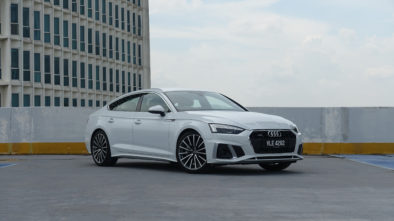Un-shockingly impressive. The 2019 Tesla Model 3 Review!
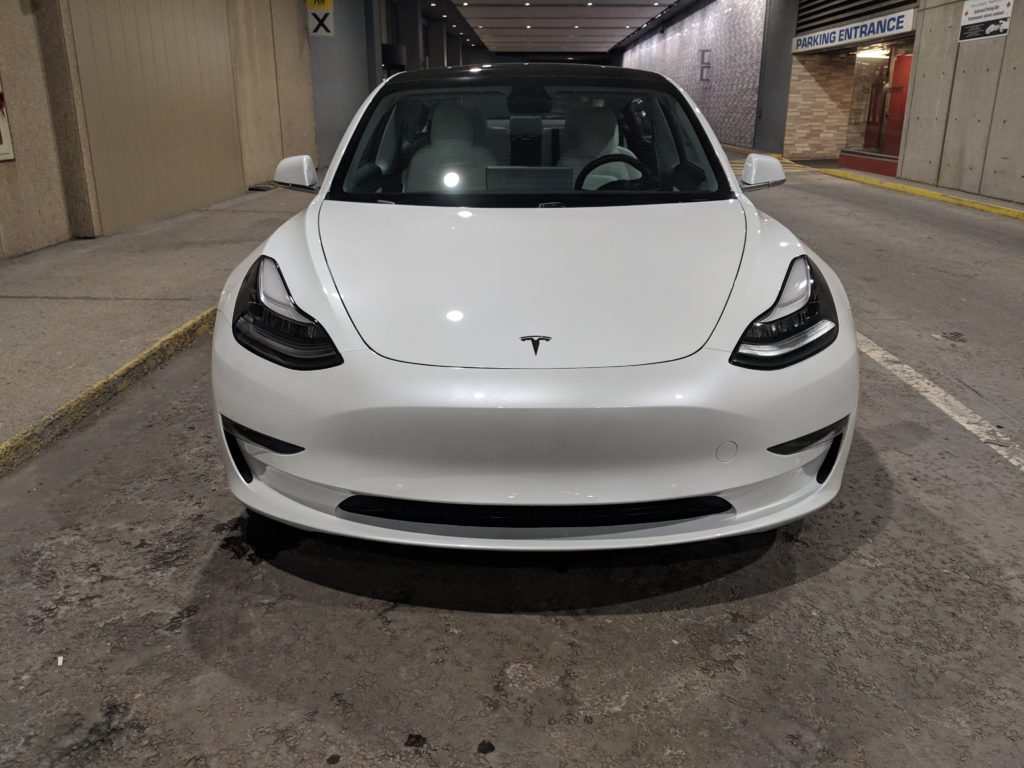
Introduction
A hat-trick, for the uninitiated, describes three positive achievements in a game. Take it as three goals in hockey or soccer. Three successive race wins in Formula One. But what about three class leading electric vehicles, from a single manufacturer?
Tesla is synonymous with the modern electric car. Obviously it wasn’t the first to market with an EV, but aside from their Lotus-based Roadster electric coupe, Tesla’s first true mass-produced EV, the Model S, and the sequel, the Model X, have re-written the rule book on what an electric car should be and can be.
Model 3 represents Tesla’s first foray into the pseudo-affordable EV market, a market that has definitely existed prior to Tesla, but historically has been somewhat lukewarm in terms of execution. The Mitsubishi i-MIEV was one of the first ones out there in early 2010, with a compact footprint, restricted cargo space and rather woeful charge time and range.
The first generation Nissan Leaf was the more successful EV when it went on sale around the same year in 2010. Now in its second generation, Nissan’s Leaf remains one of the best daily EVs available that also was relatively affordable – but again, it was (and still is) not a long range EV with 243km on its standard 40kWh battery pack, the addition of the Leaf Plus with a larger 62kWh battery with increased power (214hp) and range (363km) however, made it more realistically usable than ever.

The entry of the Chevrolet Bolt with the 60kW battery into the EV market in 2016 was the first time we did see an affordable EV that also had the range to boot – at an EPA rated 383km. For the first time it was possible to get a long range EV that also did not cost upwards of USD40,000 (before dealer and manufacturer incentives/tax breaks).
You might notice that the Leaf Plus comes with virtually identical driving range with the Bolt, but keep in mind the Chevy was launched back in 2016 while the Leaf Plus was only just available three years after, making the Bolt’s specifications even more impressive. No surprise then, that the Bolt was 2017 North American Car of the Year.
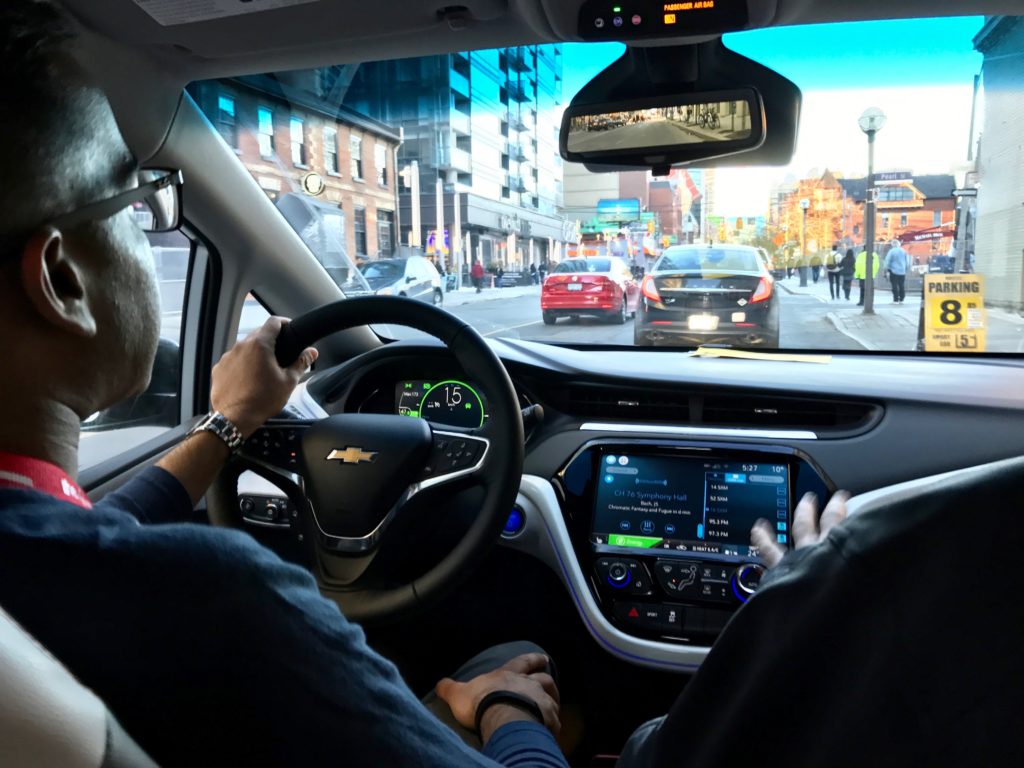
Back in 2017, we gave the Bolt high praise.
“…truly pleasant EV that goes to show that not only are EVs mature enough to be sold at mass market prices, it also shows how much GM can achieve when they put their heart and soul into making what effectively is a world class car. The Bolt is a class act for its price and compared to its competitors like the BMW i3, VW e-Golf, Nissan Leaf and the likes, it is truly ahead of the competition. Is it ahead of the Model 3 – that remains a question we can only answer once the Model 3 actually hits full production and consumer delivery begins.”
Now that the Model 3 is here, is it better than the Bolt, does it live up to the hype and more so, is it a hat-trick by Tesla?
This review is going to be a deep dive into the Model 3, how the whole thing works, how it feels to drive and how does it stack up in the numbers. So sit back, grab your coffee and enjoy. If you need a summary, the short answer is yes, it is very good.
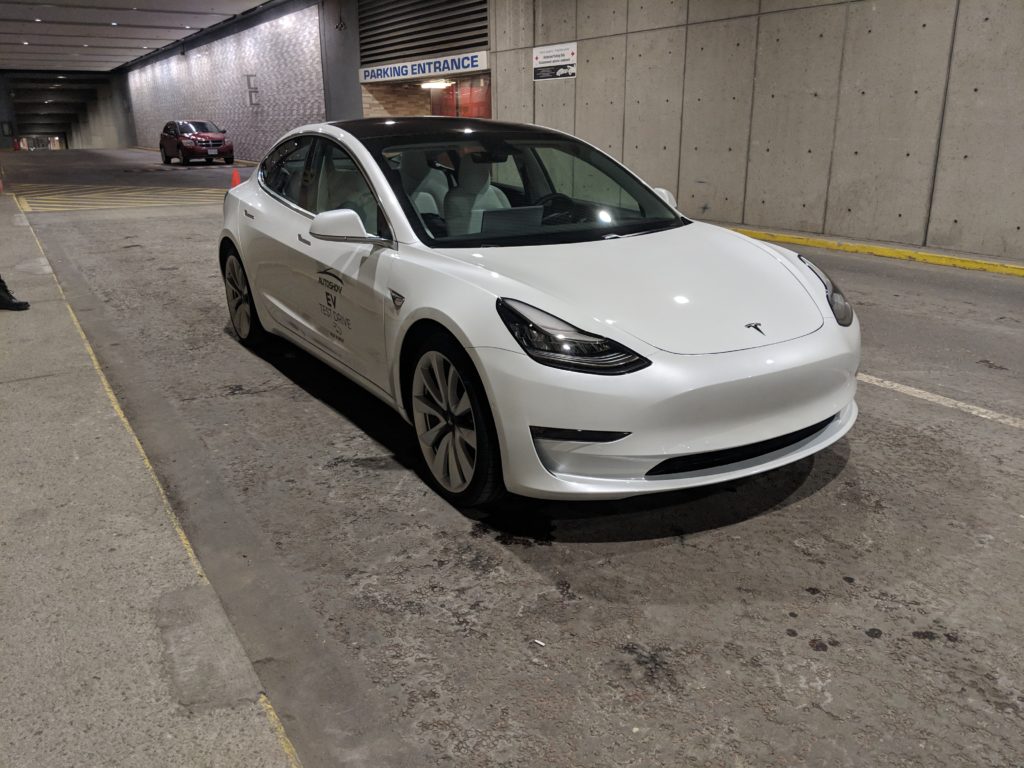
Architecture
Tesla has not changed the core architecture of its vehicles too much, in the transition from the larger Model S and X to the 3. For the most part, Tesla have evolved the previous S/X platform into a more affordable platform to build with, and this evolved platform will be highly reused in the Model Y compact SUV. Just like Model S and X, the Model 3 has a battery pack that makes up the floor of the vehicle, and by default is equipped with a rear motor (making it a rear wheel drive car). It is possible, just like Model S, to opt for the dual motor all-wheel drive setup. The most affordable version is however only available with the rear wheel drive configuration at the time of writing.
Tesla has now moved away from disclosing the exact capacity of the battery from a kilowatt-hour perspective, instead opting to disclose a projected range by each battery type. There have been independent sources who have revealed an estimate battery capacity in each Model 3 battery configuration and subtle differences in the exact battery design in Model 3 versus Model S and X – head to Elektrek’s article on it here to learn more about that.
Because of the low centre of gravity and the high strength steel used in the Model 3, it is now one of the safest cars on the roads today – part of the reason for this is also the increased crumple zone due to the lack of an engine in the front. Even when equipped with the secondary front motor, there is still a relatively large crumple zone, which Tesla allows you to use as a front trunk aka frunk, unlike most other manufacturers. Tesla themselves have done a deep dive into how Model 3 was made so safe here.
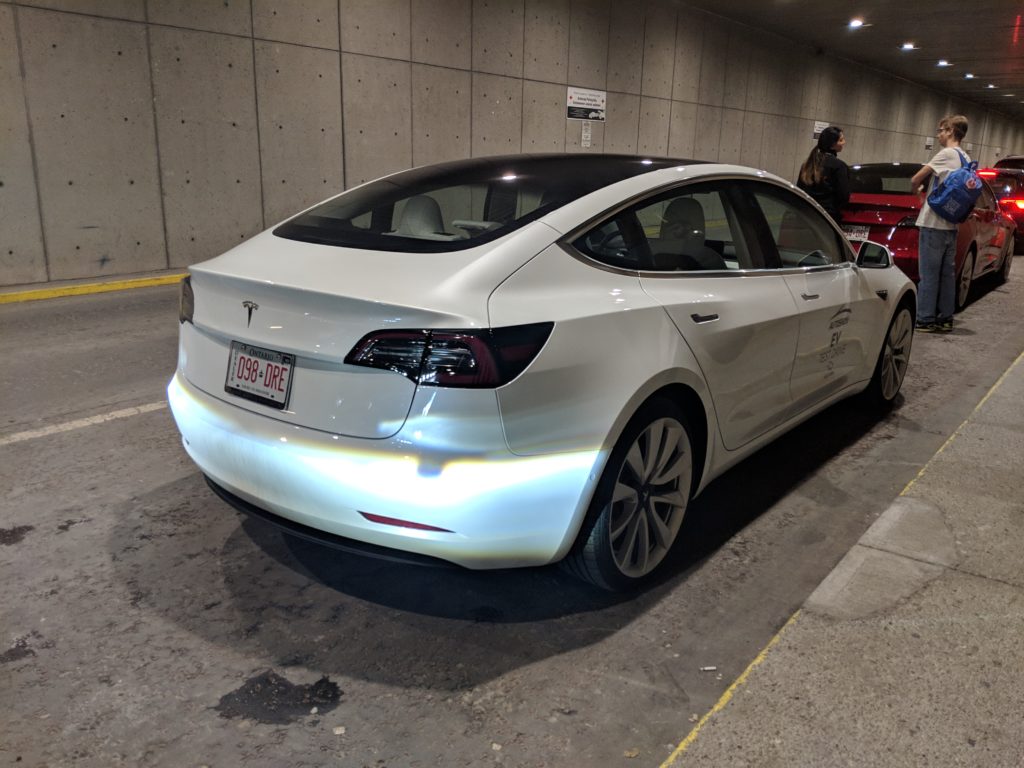
Why is the $35k mark important in the US?
To first understand why the USD35k* mark is so important in the US – let us first look at the pricing of typical American choice family sedans, things like the Toyota Camry and Honda Accord.
In general, these cars usually start at around the $23k mark for their regular gasoline variants – so typically something like a Toyota Camry L which would have a 2.5l petrol engine, automatic transmission and very basic features like fabric seats and in some cases, even plastic hubcaps (yes, that is still a thing). While US regulations do require high standards of crash protection, most of these cars do not skimp on safety – you are still getting a standard 6-8 airbags, ESP and in some cases even autonomous emergency braking, albeit a basic system but it is better than nothing.
Having said that though, most private buyers would at least look at buying a Camry LE (or equivalent) that usually would ring in below $25k, before taxes. These are typically people who need to have a car that is dependable and is a point A to point B car, and can move 5 adults in reasonable comfort and economy.

When you do step up to this segment’s hybrid offerings, things like the Honda Accord Hybrid and the Toyota Camry Hybrid, that is when things look a lot more interesting – as it turns out, hybrids here are not that much more expensive than an equivalent regular petrol 4 cylinder family sedan, and hence more often than not, people do take the hybrid option instead – especially when you end up either leasing the vehicle or financing it. At that point, you are looking at a car that would be closer to the $30k mark, base.
Coincidentally, this is also about the same price as ‘entry level’ luxury vehicles (though in very basic specs). So think of your Mercedes-Benz CLA250, or Audi A3 1.8 TFSI (front wheel drive) or even a base BMW 320i – these are all options that start at about $30k or so, with a sprinkling of options you are easily at the $35k mark.
And all of this is not including the cost of gas to run the car in the first place. While it is not exactly free to charge up a Model 3, recharging an electric vehicle is actually a lot cheaper than actually topping up a conventional fuel vehicle to travel the same distances. It does not help that fuel prices are consistently increasing and in reality, it is possible to install a home fast-charger to take advantage of low power costs at night to charge an electric vehicle quick enough for the drive next day.
*As of 2022, the Model 3 starting price is USD46k.

Beauty behind the madness
When we first saw the Model 3 in pictures, it was quite easy to say that it wasn’t particularly… flattering to look at. Somehow, it looked like a Porsche 996-generation 911 in the front, with a really stubby rear. The lack of a front grille or much detail in the front did not help as well, it made the car look rather dull and almost unfinished in the front.
In reality, we are happy to report that the Model 3 is a lot better looking. It’s not as resolved as the German or British alternatives, but it is not too bad. The front needs a bit of getting used to and looks a lot better when looking at it top-down, as opposed to a lot of press photos from Tesla that were shot from the bottom-up. Tesla’s argument to have such a setup was primarily because of aerodynamics.
There is no real reason to have an open grille anyway since it is an EV, and arguably, there is no reason for a fake grille/or the clunky nose cone found in the original Model S. The facelifted Model S is a lot better looking than the Model 3 with it’s fake grille from the Model X, but for a model like the Model 3, every degree of coefficient drag mattered as it would have an effect on the range of the Model 3.
As standard on all Model 3s, you do get full LED headlights with auto high beams, though without adaptive front lighting systems that allow the headlights to better direct the beam in the direction you are turning. The rear lights are also full LED units, just like other Teslas, and pretty much most new cars in that price range as well. Tesla has tried to simplify the Model 3 a little, in the sense that unlike the Model S, Model 3 does not have door handles that have a motor to extend and retract them in – instead, Model 3 uses a manual hinged system that always sits flush with the car, just like what you would find on something like a Jaguar F-Type. However, internally, the system is still an electric motorised setup to actually unlock the door – which is why even on the inside, you do not pull a handle to unlock the door, instead, you press a button on the inside to release the door.
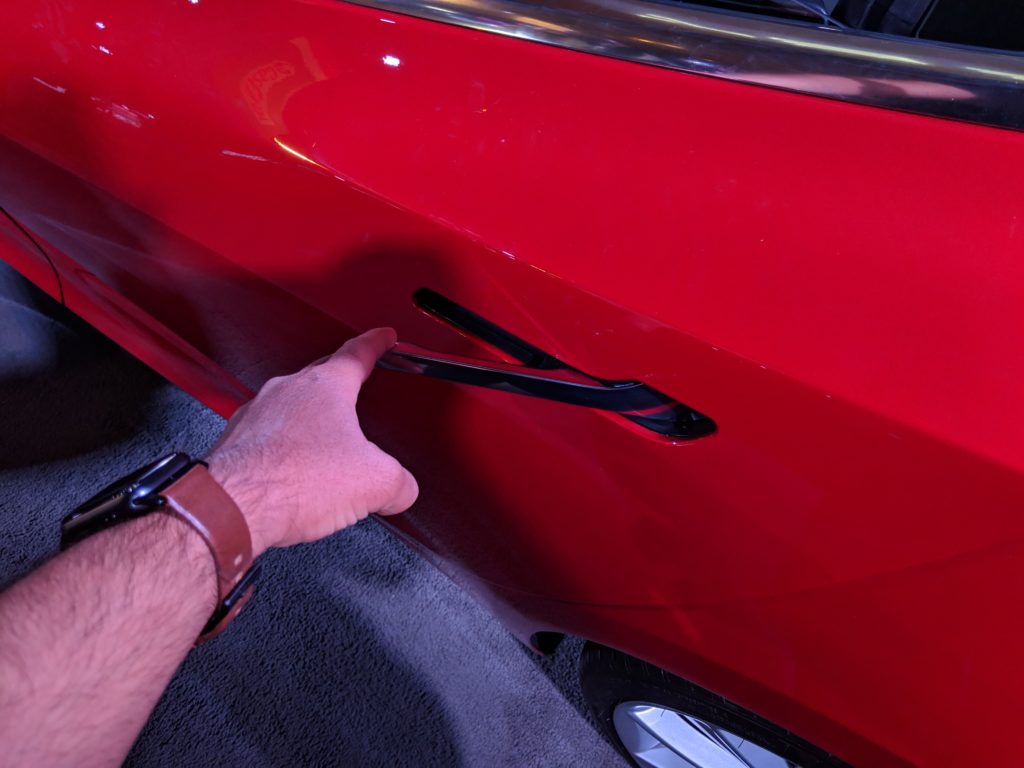
There’s no actual key per se on the Model 3, when you take delivery of your Model 3, Tesla helps you to set it up and pair it to your smartphone and it actually depends on your smartphone in order to unlock and start the car. Unlike other brands that are starting to introduce smartphone-based unlock and start capabilities, Tesla’s system does not use NFC, but rather over Bluetooth, so as long as the car can connect to your phone and handshake with it, it will be able to unlocked and driven. Tesla does give you a backup credit card thing that acts as the key as well, for say, the instances where you let someone else to drive the car. It is an interesting concept, but a little cumbersome over a regular key fob in our opinion.
The interior is probably where Tesla has really outdone themselves from a design perspective. When the Model S first came out, the concept of a large, central touch screen was very foreign. It was very impressive and did reset what an interior could be. Model X was more of an evolution rather than a revolution of the Model S interior, but after nearly 6-7 years, we finally get to see and try out Tesla’s future interior design direction.
Model 3 is the first Tesla with this new interior design, and is almost a preparation for a future collection of Tesla models that are fully autonomous and do not have a steering wheel. In the middle of the car you get a large 15” touchscreen, almost like a one screen to rule it all. Regardless of whether you get the full navigation or the basic navigation system (available on the lower variants) the hardware is still the same. Interestingly, unlike the Model S/X and even most other cars in its class, the Model 3’s touchscreen sits rather flat on the dash – it is not angled to the driver in any way, again a cue suggesting that the future of mobility doesn’t exactly involve a human driver. Unfortunately however, the screen is not adjustable in any way, which is a bit of a pity.
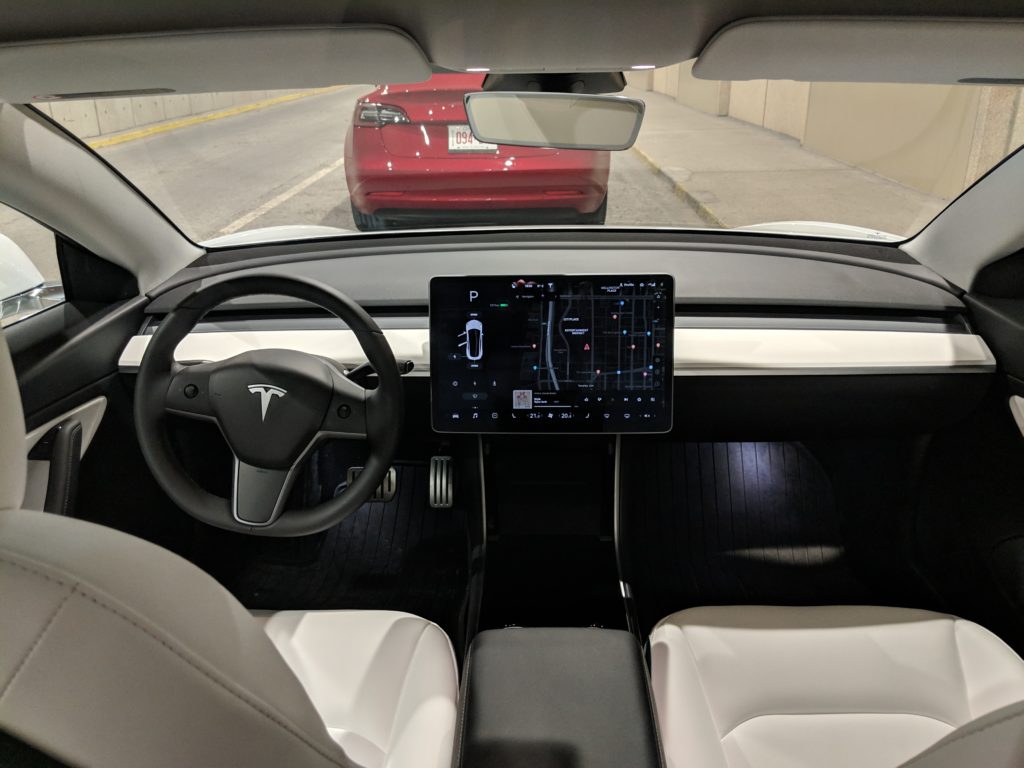
The screen effectively doubles as an instrument cluster to display speed, warnings and Autopilot status (on the ⅓ that is closer to the driver), while the balance ⅔ of the screen is used to control the various settings and features of the car. The only physical controls are just two rotary balls on each side of the steering, and two stalks, one to control the indicators and to flash the high beam, and the other to select which gear position you want to be in – which doubles up as the stalk to enable and disable Autopilot. It is a very interesting experience and the idea behind this is that you are likely to not use a lot of these buttons and knobs after setting it up once (i.e. mirror and steering wheel position controls).
When we did first get into the Model 3, it did feel a little cumbersome to setup the mirrors and steering wheel to our desired position – especially the mirrors. Each mirror is controlled by the corresponding rotary ball on the steering wheel (so the left rotary ball controlled the left mirror, for example). The concept itself is great, but the ease of moving the mirror to the left or right was a little fiddly. It was easy to overshoot the vertical angle you want the mirror to be in, when moving the rotary ball up and down. The same problem also manifests when adjusting the steering wheel position – the screen indicates which rotary ball controls which angle, so one controls the vertical height and the other controls the reach of the steering wheel. It is an interesting concept and the idea is that you would then save it into your driver profile, but in reality, was this more of moving controls for the sake of being different without genuinely offering an improvement in terms of ease of use?
We do appreciate the light and wiper controls on the screen however, that made sense as you could just set both into automatic mode and just never had to deal with it again. Other features and setup was relatively easy for the most part, and Tesla’s navigation system is still easily one of the best ones in the industry. It did have some weird quirks, for example. Tesla still does not support Android Auto and Apple CarPlay, which is a little odd. Some controls are a lot easier than others, for example the electric control for the A/C vent position on the screen is a lot better than other brands, but other things like the heated seats control being on the touchscreen makes it a little tough especially in winter, as you cannot operate the screen with gloves.

For a first model year vehicle, Tesla has definitely improved in the quality and comfort department. The interior in our test car was well put together with no rattles or squeaks, though your mileage may vary, especially in terms of panel gaps. In some rare cases, there have been some inconsistencies in the panel gap department, however, and it’s not quite going to give Audi any concerns in the fit and finish department for now. The seats are genuinely comfortable, and with the premium interior’s white leather, it looks properly expensive. What is particularly interesting is Tesla now only uses “vegan” leather, which means it is actually a synthetic leather. Surprisingly though, Tesla has been able to replicate the feel of high quality real leather, close to what we would see in Jaguars and Land Rovers equipped with the higher end ‘Windsor’ leather seats. Put it this way, it makes the so-called real Dakota leather in BMWs and Artico leather in Mercedes-Benz vehicles feel cheap.
The open pore wood on the dash surface for cars with the black interior looks very good, and allows the car to have a rather “warm” and inviting feel, almost Scandinavian. It feels properly premium and does help in making the cabin feel airy. However, this interior trim option is the only option you’re getting with the black interior at least for now – there’s no option for polished wood or carbon fibre, which is particularly interesting especially considering there is a performance model available. If you do opt for the white interior, this trim piece is swapped out for a white plastic like trim piece, which in our opinion makes the cabin feel less premium and more sterile. You’re probably better off just sticking to the standard black interior and saving the cash.
The sense of airiness is greatly amplified by the full length glass roof that is standard on every Model 3. Note that it is a glass roof, and not an openable electric sunroof, but it is properly impressive how Tesla has been able to pull this off. We did not get to test the heat rejection as we drove the Model 3 in winter, however it is a slightly tinted piece of glass and has UV protection applied to it. For the people in the back seat, the glass roof really changes the experience in the car itself. Space wise, the front has no complaints with the exception of the lack of a proper foot rest for your left foot in the driver’s footwell. The front seats were very supportive and well padded, almost similar to the Jaguar i-Pace).

The rear seat space is good, it is similar to many cars in its class – that is 2 people will be comfortable on a long journey, but 3 may be a bit of a squeeze. The outboard seats do have ISOFIX anchor points and the lack of a centre tunnel in the rear makes it decently spacious. Unlike on the Model S, the floor isn’t particularly high (a common issue on EVs with a floor mounted battery), so your knees aren’t uncomfortably in the air. You get 2 out of the 4 USB ports in the rear, just below the centre mounted air vents. And of course, decent door bins for some magazines or an iPad are also present in the rear doors, in addition to seatback pockets.
Trunk space is unbelievable in the Model 3. Like every Teslas, you get two trunks, one in the rear and a front trunk (aka Frunk). The front trunk is designed to accommodate smaller bags (softer duffel bags, backpacks) and the likes. You could easily fit a couple of backpacks or one to two medium sized duffel bags in the front trunk easily. The rear trunk is absolutely huge for its class. While the opening is a little tight, it easily can swallow a full size suitcase and a few smaller bags without too much drama. However, the Model 3’s special trick is due to the lack of a spare tyre in the rear plus there is a second luggage compartment below the trunk floor. It can easily slip in a medium duffel or a cabin sized suitcase.

The interior is not without some criticisms, however. While the touchscreen is bright and easy to use, it is undeniable that the speedometer being offset to the right (or left, for right hand drive models) is not something you would immediately get used to. Personally, we felt it was a little distracting to have to keep glancing over to figure out the speed – especially considering a simple solution would have been to just add on an option of having heads-up display. When a regular compact car like the Mazda 3 has this, even as an option, it is rather glaring for the Model 3 to miss out on this.
Interior storage is a lot better thought out in the Model 3 compared to previous Teslas, without a doubt. We especially love the deep storage space available between the two front seats, which also have 4 USB ports with cable pass-throughs for 2 cables to charge up your smartphone. Having said that, the lack of wireless charging for phones is something we have come to expect in vehicles at this price point, even if it was a cost option. The electronically controlled glove box opener through the touchscreen is another rather unnecessary option, in our opinion. The older style setup in the Model S with a physical button was a lot easier as it was a one touch affair.
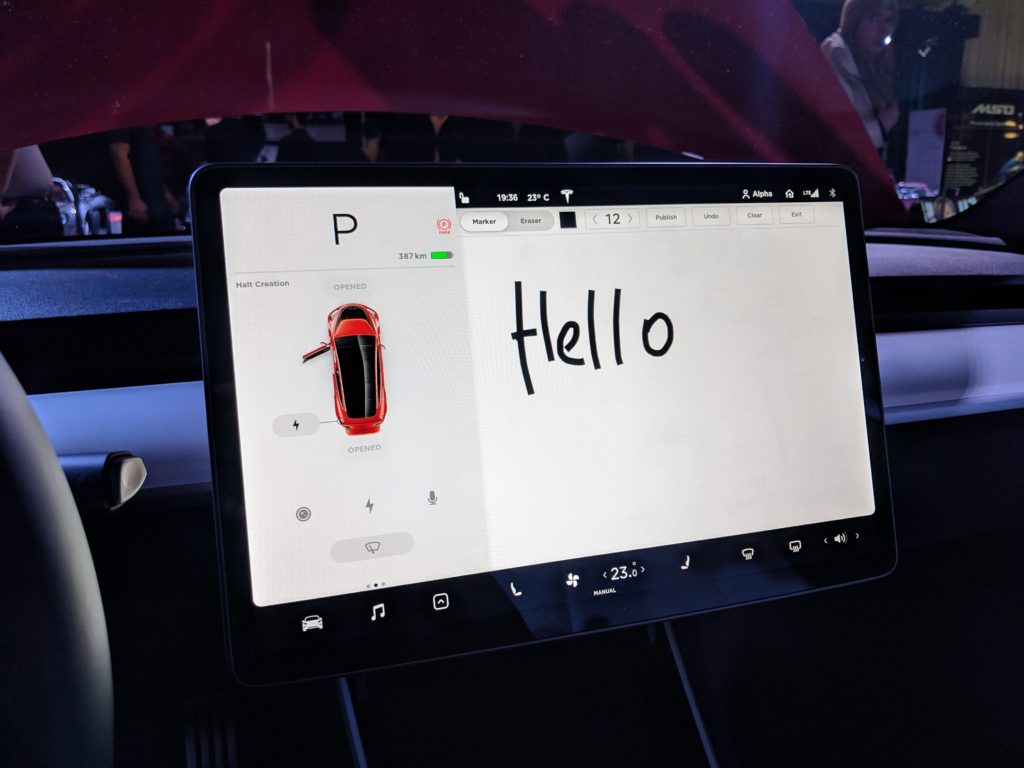
Driving Experience
To put it short, it is very mature, and ridiculously fast off the line. But you already knew that, it is a Tesla after all.
One of the fundamental differences between the Model 3 and the Model S and X is that it is not available with any form of air suspension or adaptive suspension. It is similar in setup with others in the class, with a double wishbone in the front, and a multilink in the rear. However, what Tesla has done from a suspension tuning perspective is nothing short of impressive.
There’s a sense of tautness when you whiz through tight turns and curves, something that you would expect to see in the class benchmarks like the Alfa Romeo Giulia and the BMW 3 Series. At the same time, while it is not as soft and mushy as say, a Toyota Camry, it was still decently pliant, and very European. Driving the Model 3 felt something like a Passat with Dynamic Chassis Control (VW speak for adaptive suspension) or a BMW 3 series with the optional M Sport suspension, that is, it was solid, comfortable enough and most importantly, instilled a level of confidence.
Surprisingly though, it was a bit more comfortable and more forgiving than the fixed rate suspension in the 3 series, but not as perfect as the adaptive systems from Audi or BMW or VW. However, the fact that for Tesla’s first real attempt at a fixed rate suspension, they pretty much nailed it. BMW has spent years to make their fixed suspension a lot more pliant and less jarring without making it less fun to drive, but for Tesla to make it this far was impressive. It’s not BMW good for now, but it is very impressive.
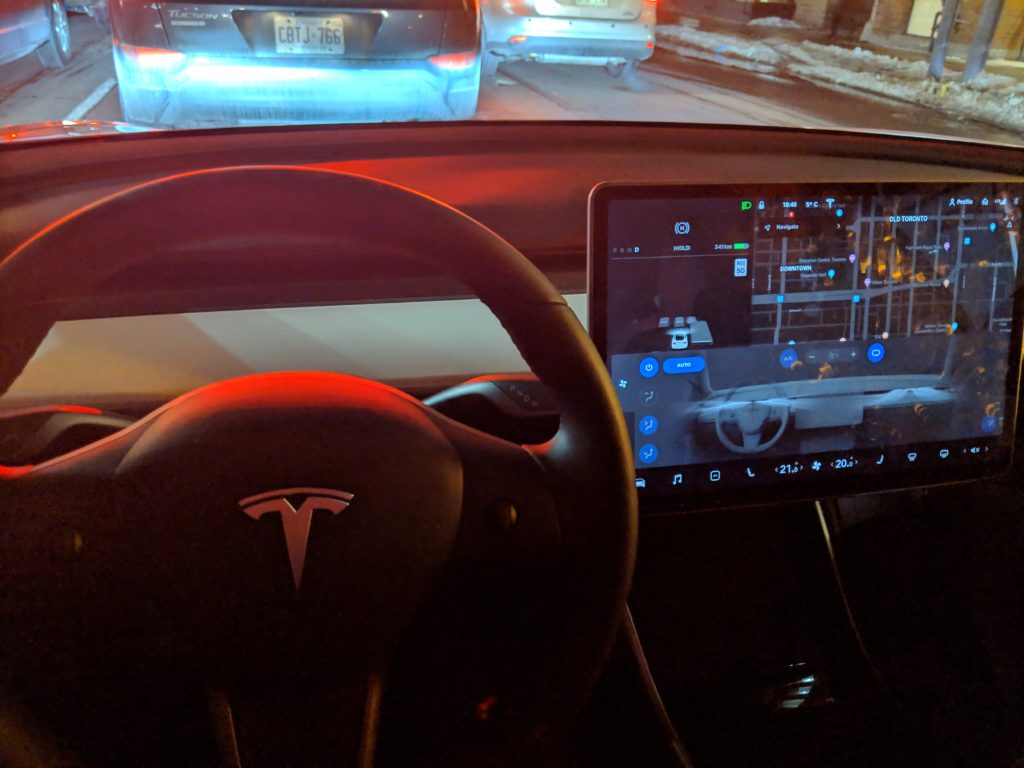
Steering feel is as expected, direct, but devoid of feel. This is something you’d expect of an electric power steering system, regardless of what car it is in. It does weight up pretty well, a lot better than most cars. In fact, while it is not up there with Porsche’s EPS calibration, it is actually quite competitive to what VWs and Audis have in place in their larger models. It is not quite like say, the Hyundai and Kia cars which just feel like toy steering wheels with terrible weighting as speed increases.
Tesla’s dual motor setup continues to amaze and there’s nothing like the (initial) acceleration of an EV. We tried it out in a closed stretch and can confirm, you hold onto the steering wheel and get pushed into the seat. It is a very responsive car at city speeds and has no issues getting up to highway speed as well. Unfortunately due to road conditions, we did not get to try Autopilot – which is one of the limitations of Autopilot and other similar ADAS systems in poor weather. We do like how Tesla have almost created a definite “kick down” point in the throttle pedal – that is, past a certain level of pedal depression that you can clearly feel, only then you send it launching away, but otherwise it is a very well modulated throttle pedal. There is almost a half second delay when you completely floor the throttle to when it actually reacts, but this is almost like a confirmation to you in case you did not intend to give it all the beans.
Brakes were generally good, as per usual with Tesla. Despite the porky kerb weight, stopping was good and brake feel wasn’t too bad. Much like other EVs, i.e. the Bolt, you can set up for one pedal driving, that is, allowing the car to have an aggressive regenerative effect so if you can get used to it, you don’t even need to touch the brakes much.
Noise vibration and harshness levels were as expected for the class, low. A common issue with EVs is the lack of engine noise makes road noise louder than expected, especially tyre roar and wind noise. However in the case of the Tesla Model 3, none of this was really an issue, it was quiet even at higher speeds. When faced with Toronto’s potholes from the winter, the Model 3 took it all in stride with no more harshness than what you’d expect its competitors. We didn’t notice any odd vibrations as well, which was good (and what we would expect from a car of this price and class.
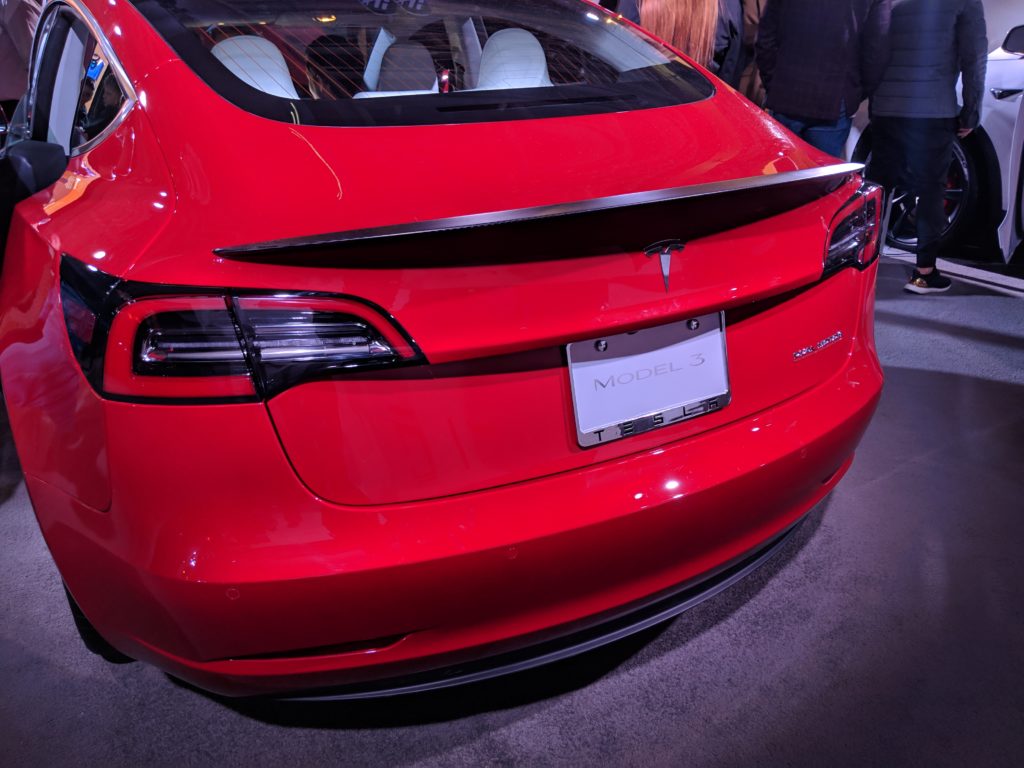
Against the Jaguar i-Pace
One of the Model 3’s competitors have been the Jaguar i-Pace, which is a bit more of a premium SUV/hatchback crossover that is slightly bigger than the Model 3, but smaller than the Model X. From a pricing perspective, the i-Pace comes in about USD10k more or so than an equivalent Model 3 Performance, but offers a lot more ‘luxury’ features and finishes, however loses out the full self driving capability (which Tesla does offer as an option). Is the Model 3 as good to drive as the Jaguar i-Pace?
One thing you can’t get away from the Jaguar is the fact that it is an SUV, or rather, a tall riding hatchback – while the Model 3 is a lower to the ground family sedan. However, being a Jaguar, it really drives and handles very well, despite its height and size. The Model 3 to Jaguar i-Pace comparison is something people have been doing on the basis that an i-Pace isn’t that much more than a top of the line Model 3 Performance, especially when you consider it financed or more so, on a lease payment. In this comparison, we have to give it to the Jaguar just on that basis despite the Model 3 driving very very well, the Jaguar does have a bit more steering feel. The option to have adaptive suspension on the Jaguar is also a very welcome addition, as you get to play around with the suspension modes (which helps make the Jaguar slightly more pliant than the Model 3 on bad roads and even tighter than the Model 3 in Sport mode). It’s a very close fight, and Model 3 only got outdone by the Jaguar on the driving front, but only just.
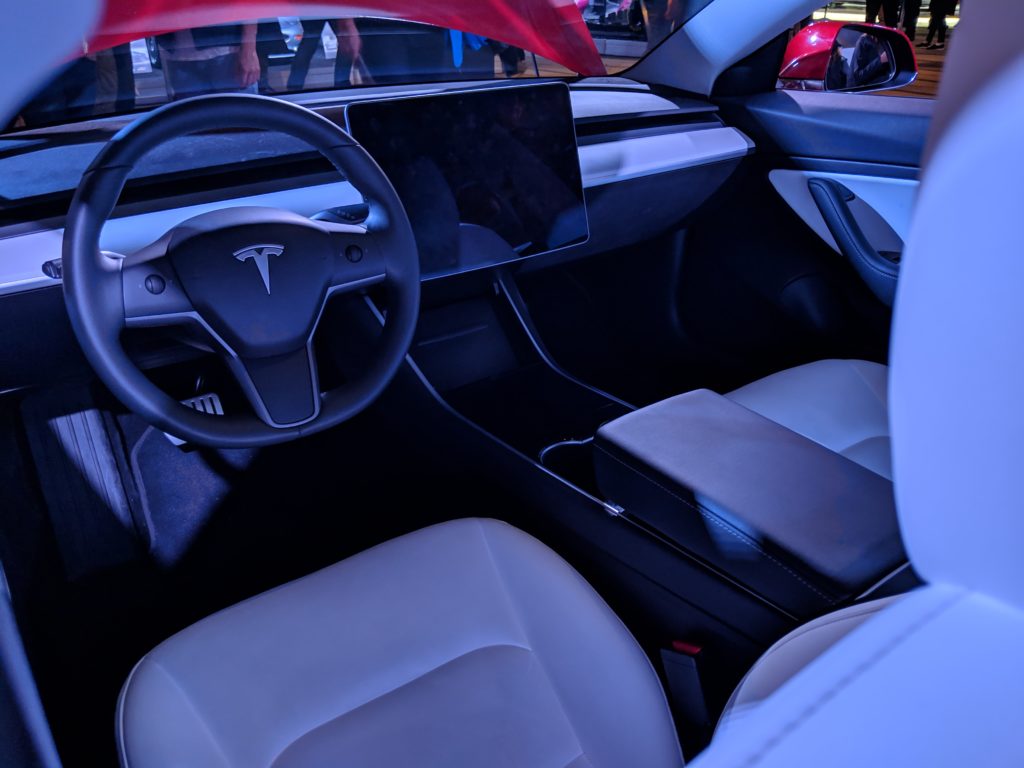
As a whole package? Now the Model 3 starts to show more sense than the Jaguar. From an overall package, the availability of a nationwide fast charging network, the eventual availability of full-self driving capability and Jaguar’s still questionable reliability and quality control (squeaky suspension and buggy touch screen controls) makes the Tesla Model 3 start to appeal more to the masses.
The Jaguar is a genuine luxury product compared to the Model 3 with its lovely leather, impressive sound system and the badge on the grille and aesthetics, but it is old world luxury, injected in an EV. The Model 3 is a different kind of premium-luxury vehicle. It’s the kind where it’s about the convenience of a fast charge network that spans across countries, the ability for you to relax in long drives with Autopilot and yet, still have your backroad fun and games with its impressive dynamics.
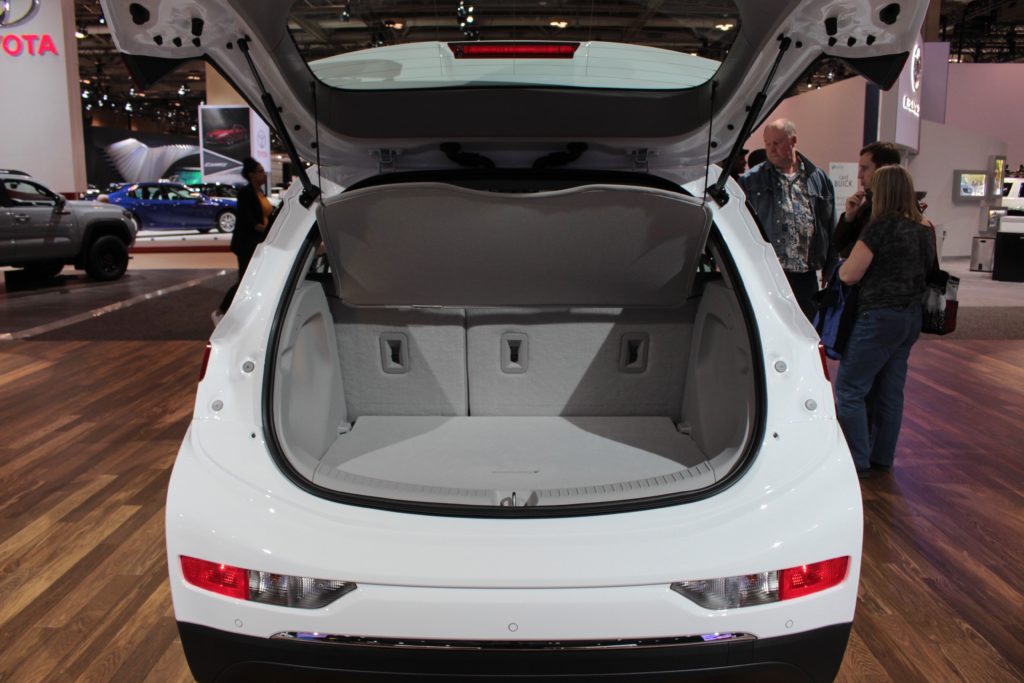
Comparing against the Bolt in the lower end market
We did mention in our Bolt review that it “gave the Model 3 a run for the money” when we first drove it in 2017. Having personally lived with a Bolt for about a year, it honestly gives the Model 3 a run for the money as an affordable runabout EV. In the year of having the Bolt, it never had any issues and it held up reasonably well in the Canadian winter. Range, just like the Model 3 was reduced in winter due to the cold weather, but beyond that it was not a bad car.
However, there were three main things that the Bolt doesn’t do as well as the Model 3. For one, the dual layer trunk in the Bolt is great, in isolation, but in reality, it is not very practical for longer trips with more luggage. That is one thing where the Model 3 definitely excels, especially with the presence of a larger rear trunk, but also a front trunk – something the Bolt doesn’t have.
Tesla’s supercharging network is also another plus point, which makes it easy to do longer road trips with the Model 3 than the Bolt. While the Bolt can be charged with a DC fast charger in public stations, it is nowhere close to the Tesla Supercharger, especially with the new generation Supercharger v3 that allows you charge up a near dead Model 3 to almost full in under an hour (especially if the battery temperature is warm enough). The Supercharger network itself is all over North America now, and in places where there is no Supercharger available, you can still charge a Model 3 at a standard Level 2 charger – with a charging adaptor in use (Model 3 is not compatible with the standard DC fast charger).

Tesla’s connected features (i.e. navigation system, access through a smartphone, etc.) is a whole lot better than what GM has done with the Bolt. As much as the Bolt has one big benefit of Apple CarPlay and Android Auto, the Model 3’s superior connected features, like its online navigation system and ease of being able to connect to the car to set up preconditioning (especially useful in the colder mornings) through the Tesla app, versus the Chevrolet app, is definitely beneficial. And of course, unlike the Tesla, you aren’t really getting the full over-the-air updates in the Chevy, and you’d still need to take it to the dealer once in a while for more low-level updates, like updates to the battery system.
Unfortunately, unlike Model 3, the Bolt’s ADAS suite is still incomplete as you still cannot get adaptive cruise control on it, even as an option. As much as the Bolt does have a Following Distance Indicator, it is merely that, an indicator. Considering there are more affordable cars that have it as standard (Toyota’s sub $20k Corolla has radar cruise control as standard on automatic models), this is still a big oversight on an otherwise decent package.
To some extent, the Bolt does give the Model 3 a run for the money, in the sense that the Bolt comes in at about US$36k before any dealer discounts and government incentives, and the full battery range of over 350km (manufacturer rated 383km) even on a base model. Meanwhile, Model 3 is costs quite a bit more to get into. Chevy has often put up incentives to move the Bolt off dealer floors.

So, is this a hat-trick by Tesla?
At the very end, we ask ourselves, what makes a good car. A good car should be safe, reliable, good to drive, well made and reasonably wallet friendly to run. In the case of the Model 3, aside from long term reliability – which is something we’d have to see if a few years time, it does genuinely feel like Tesla has nailed the tail on the pony. It drives shockingly well, close to some of its European rivals, has a great charging infrastructure to back it up, and spec for spec, it does compare well in terms of pricing and options to its more conventional competitors.
There are no doubt some design questions we do have for the Model 3, and some things Tesla did, or rather didn’t quite do, that other manufacturers would have made sure won’t happen. And the biggest thing is the Model 3 is not what we’d fully call as an affordable car for everyone – from a price perspective it is not what you would call cheap, as one could walk out with a commuter Camry (non-hybrid) for under $30k, and a high trim one at that. However, against the 3 series and A4, the Tesla genuinely presents a very compelling case. Sure, the quality is not the same as the class benchmark, the Audi A4 – but in our opinion it is actually not too bad, beating Jaguar and somewhat close to Mercedes and BMW. It has a few more years to beat BMW and Mercedes, but keep an eye out for this one, Tesla has scored a third hit.
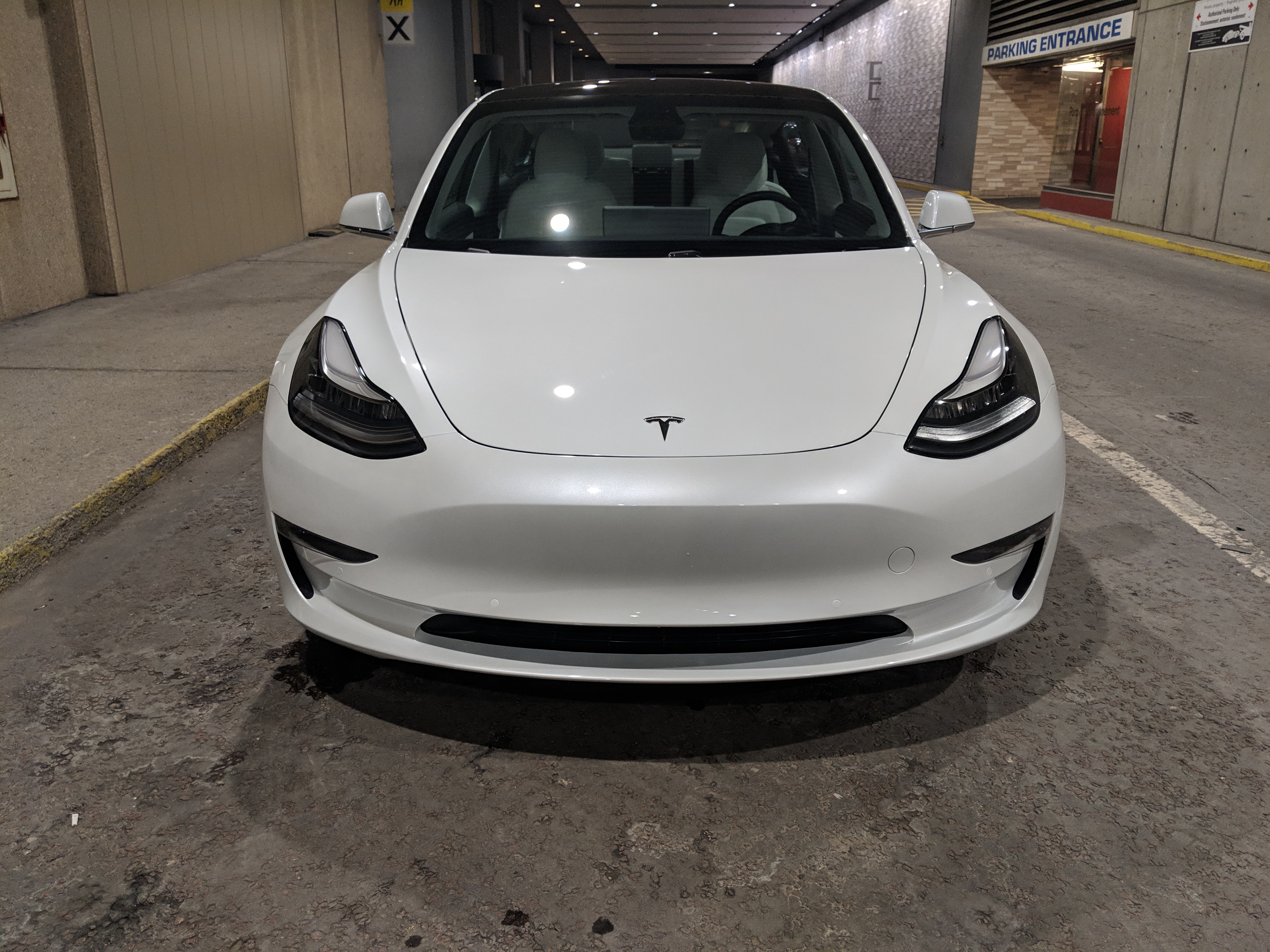
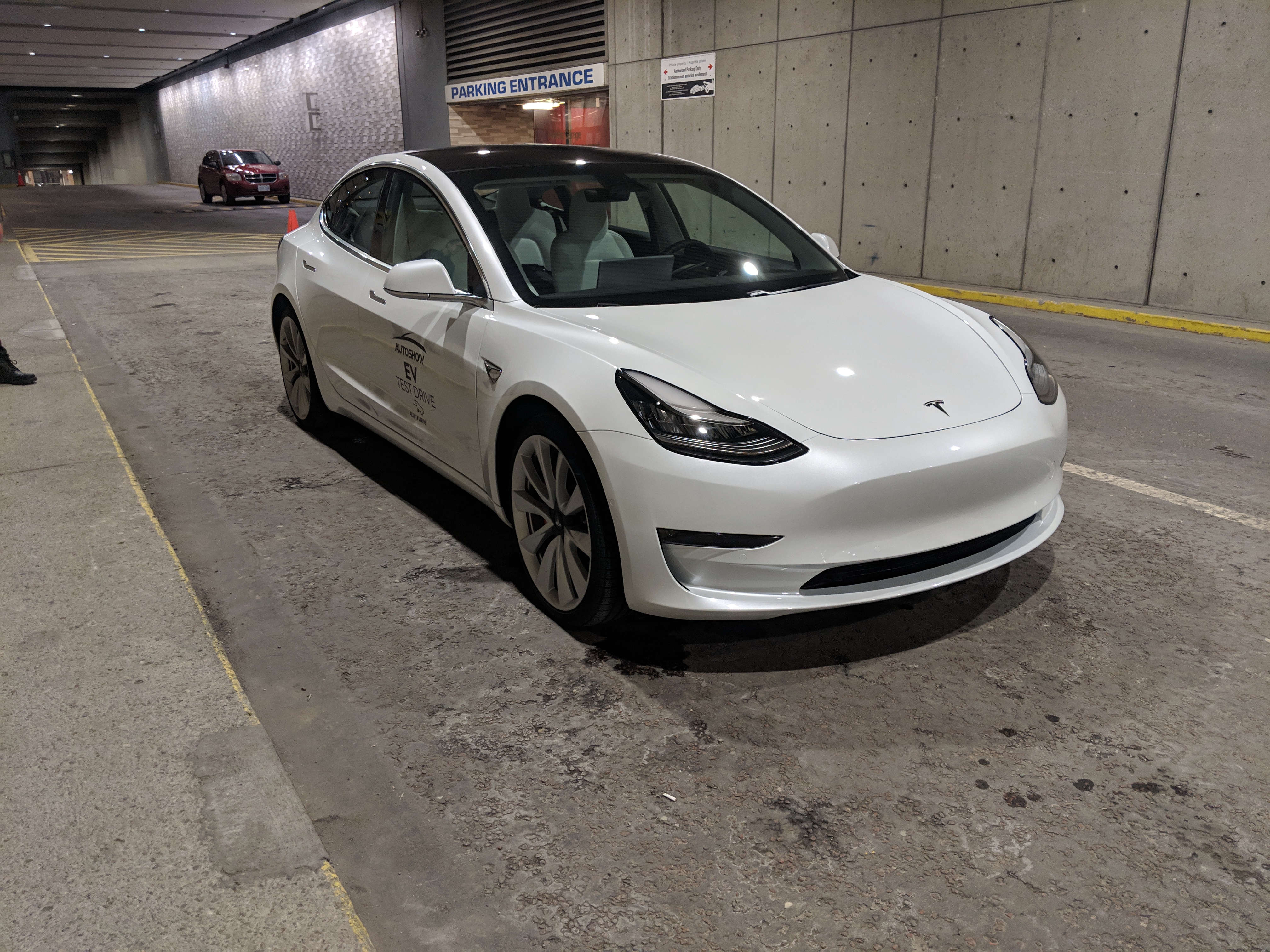


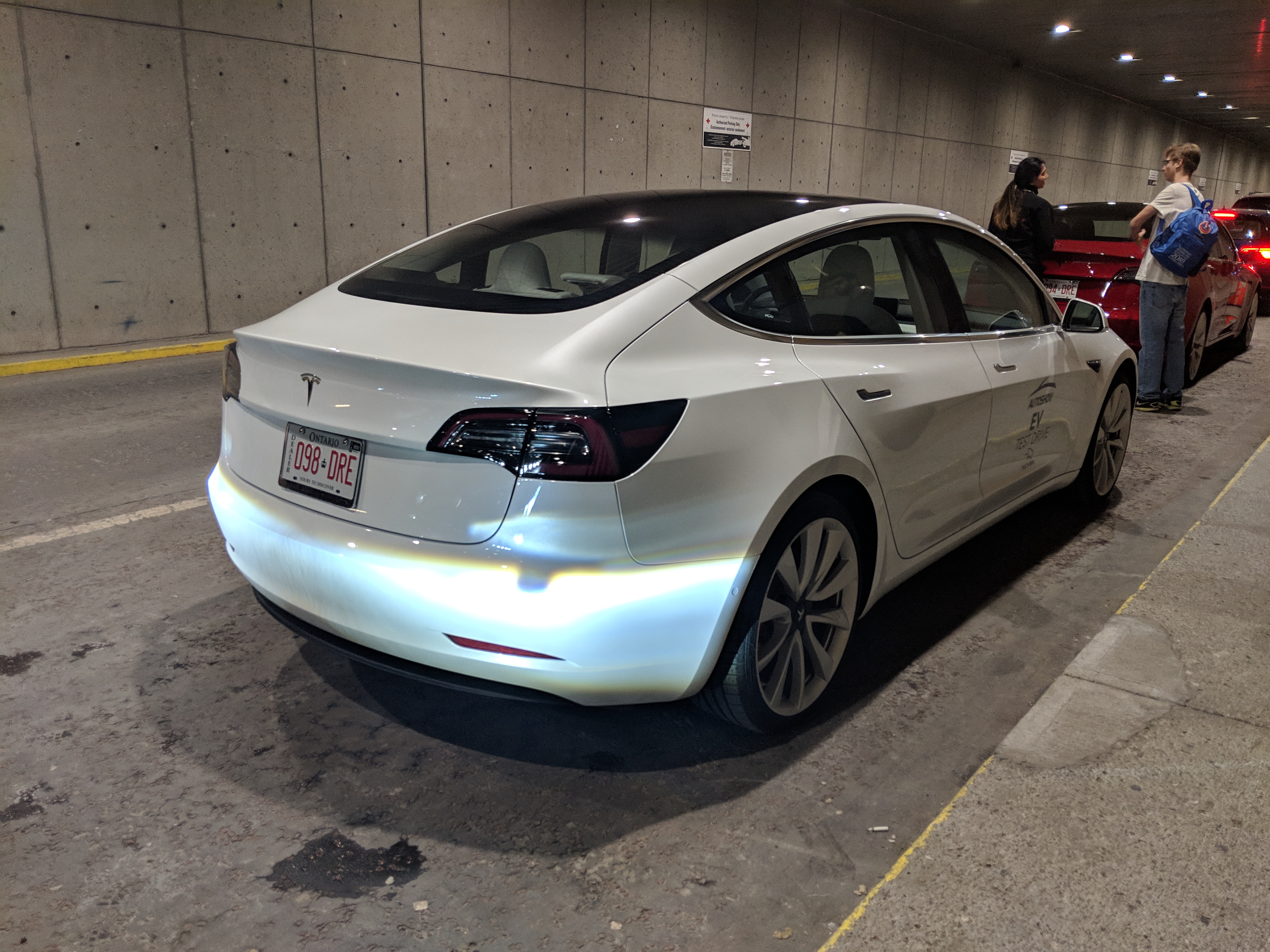
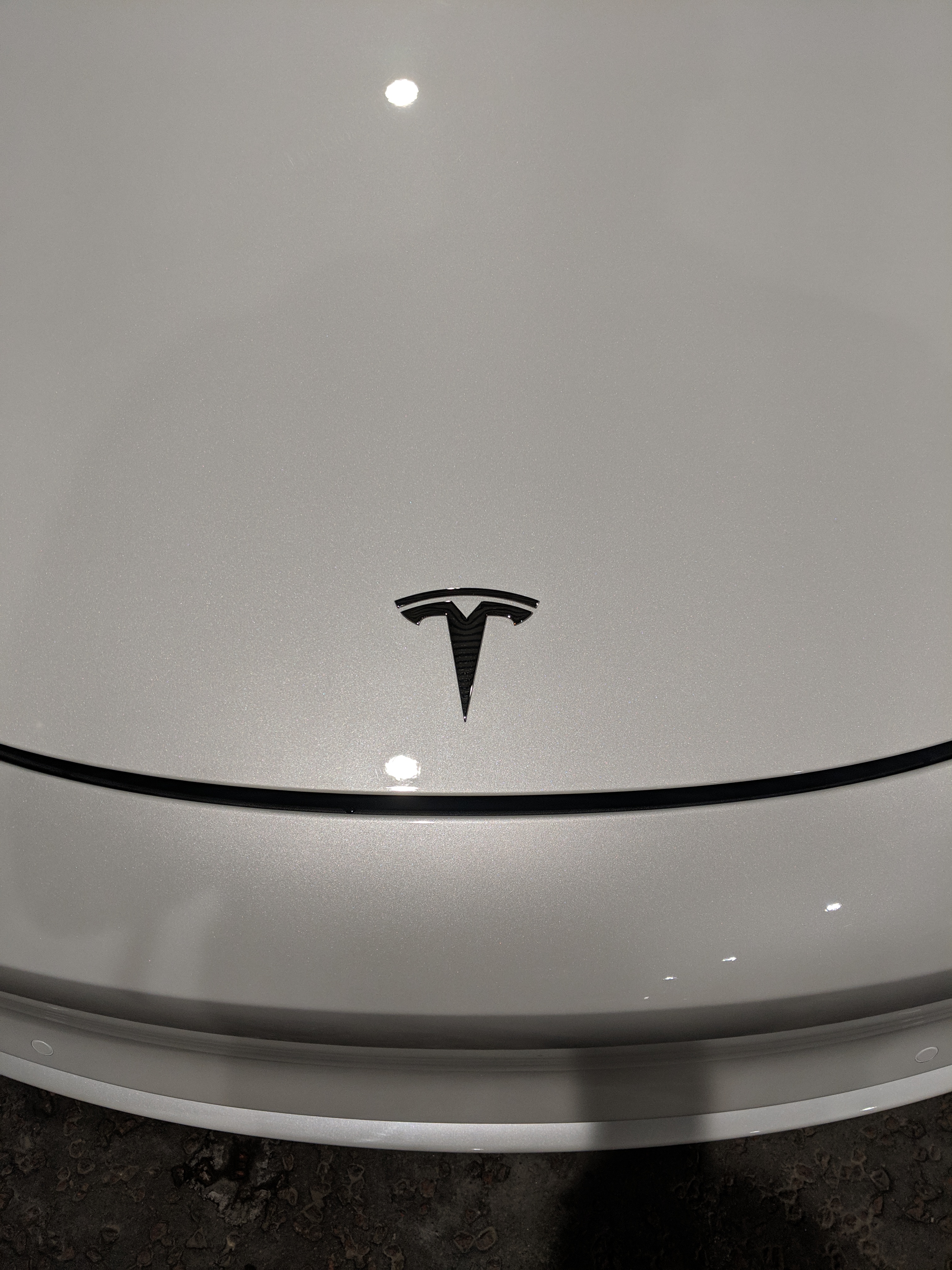
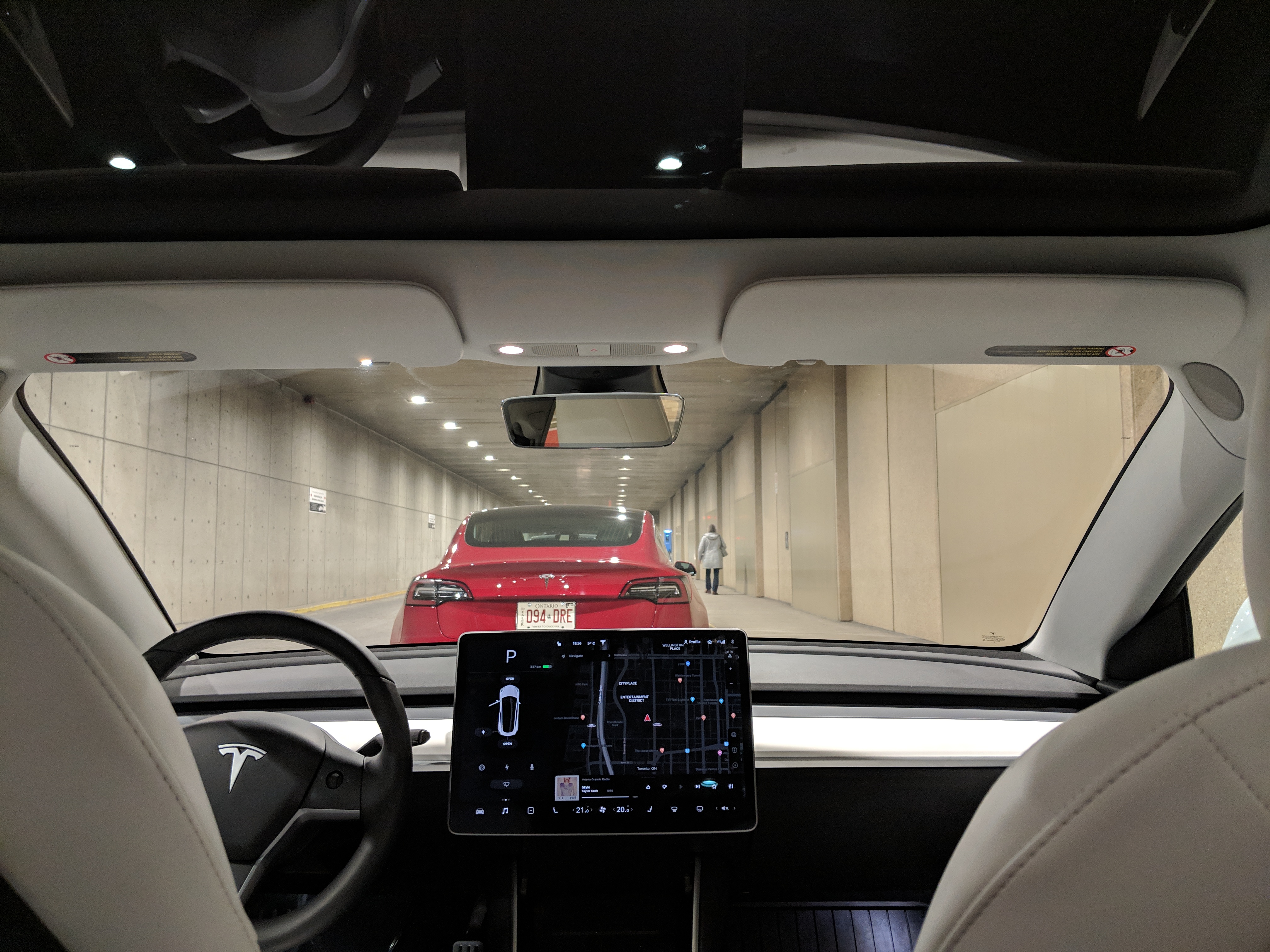

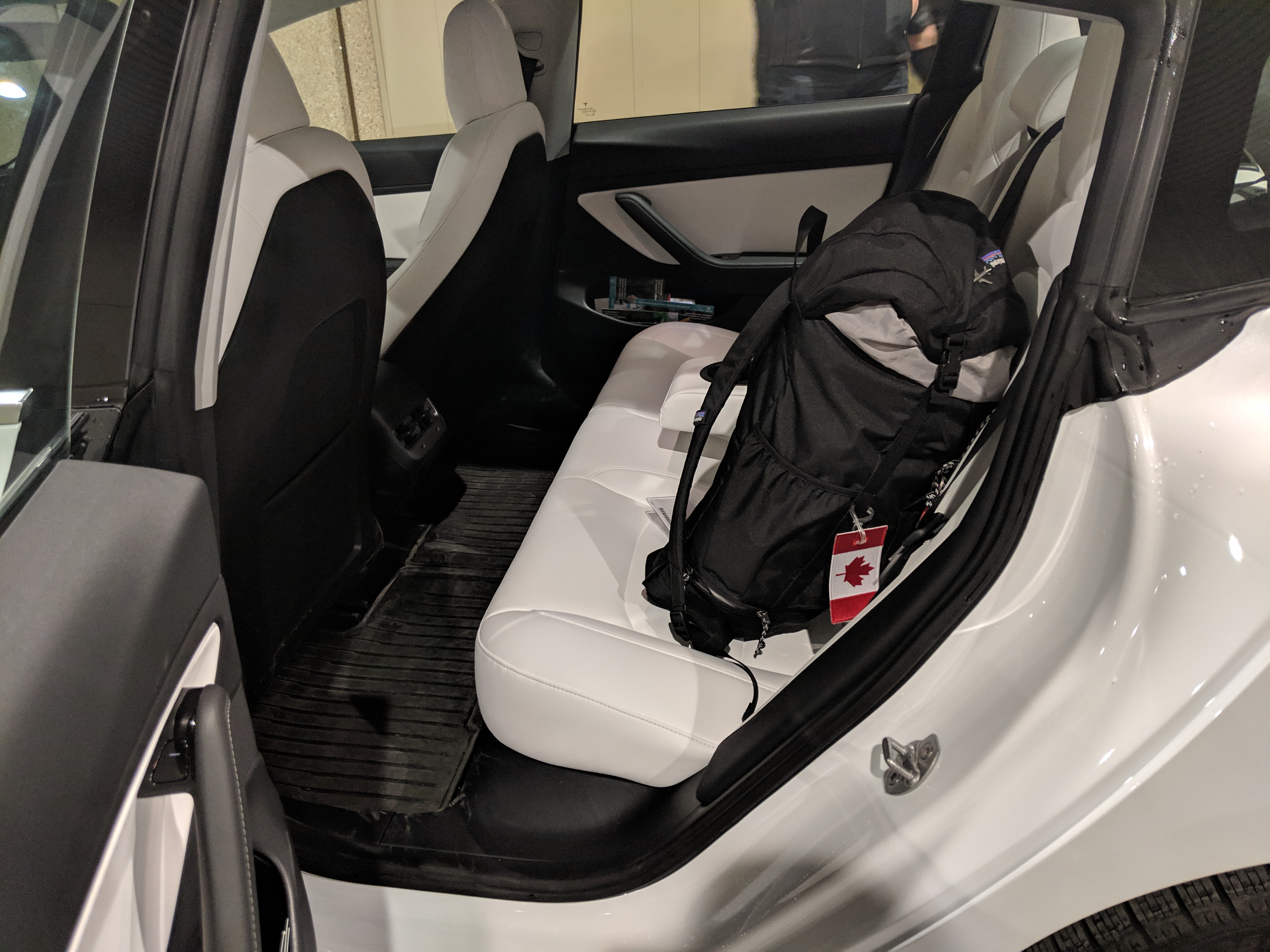
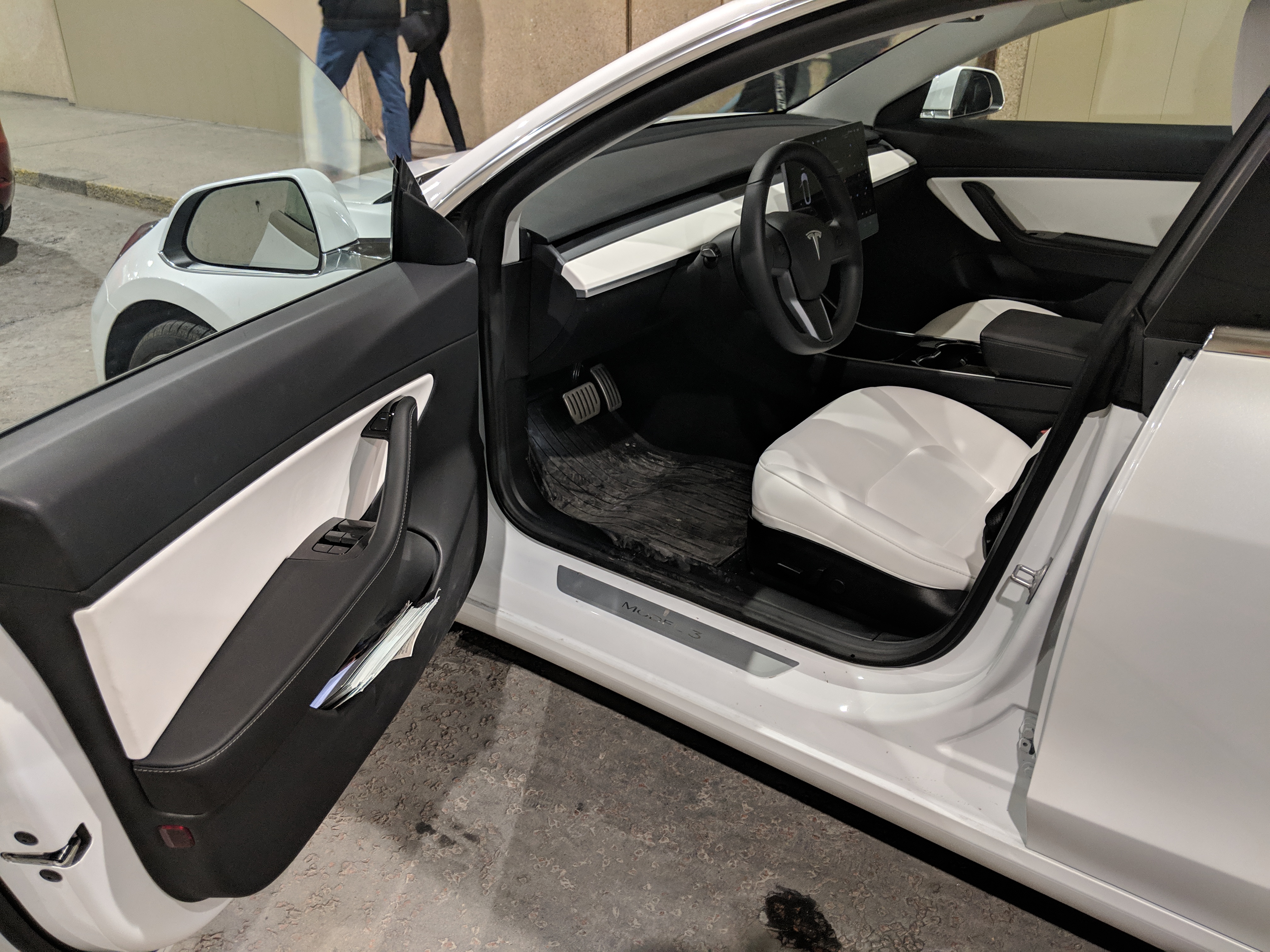
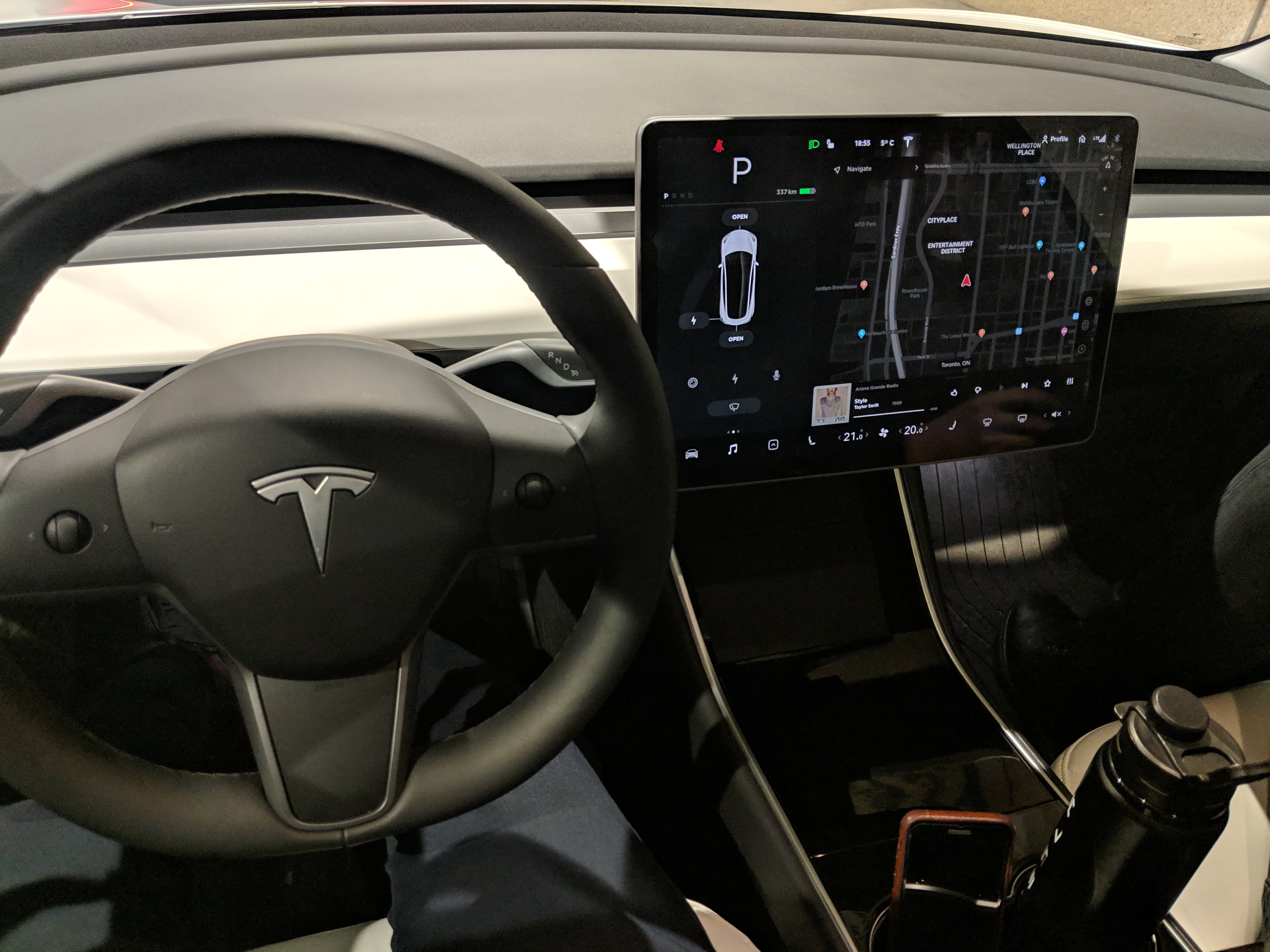
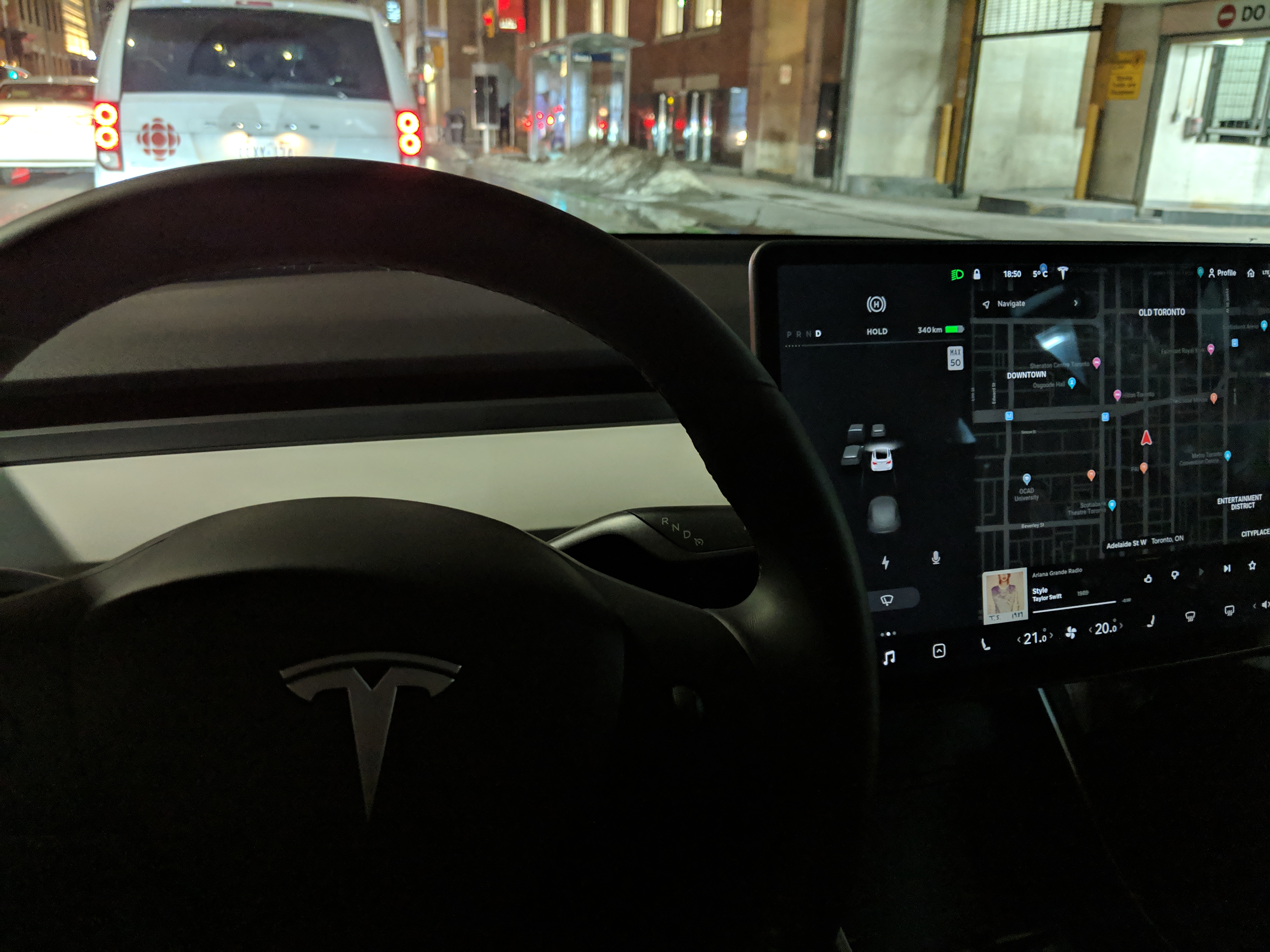
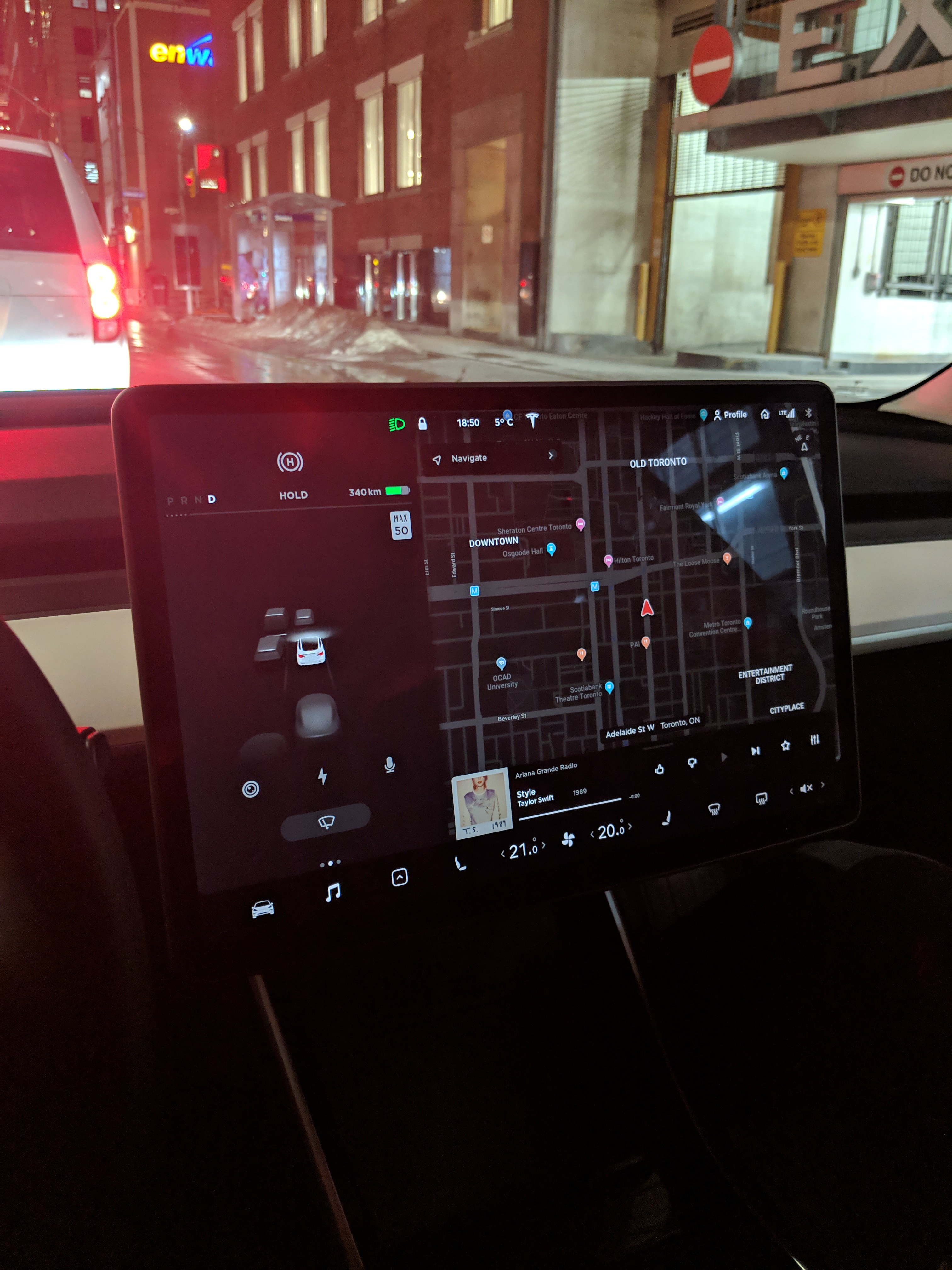
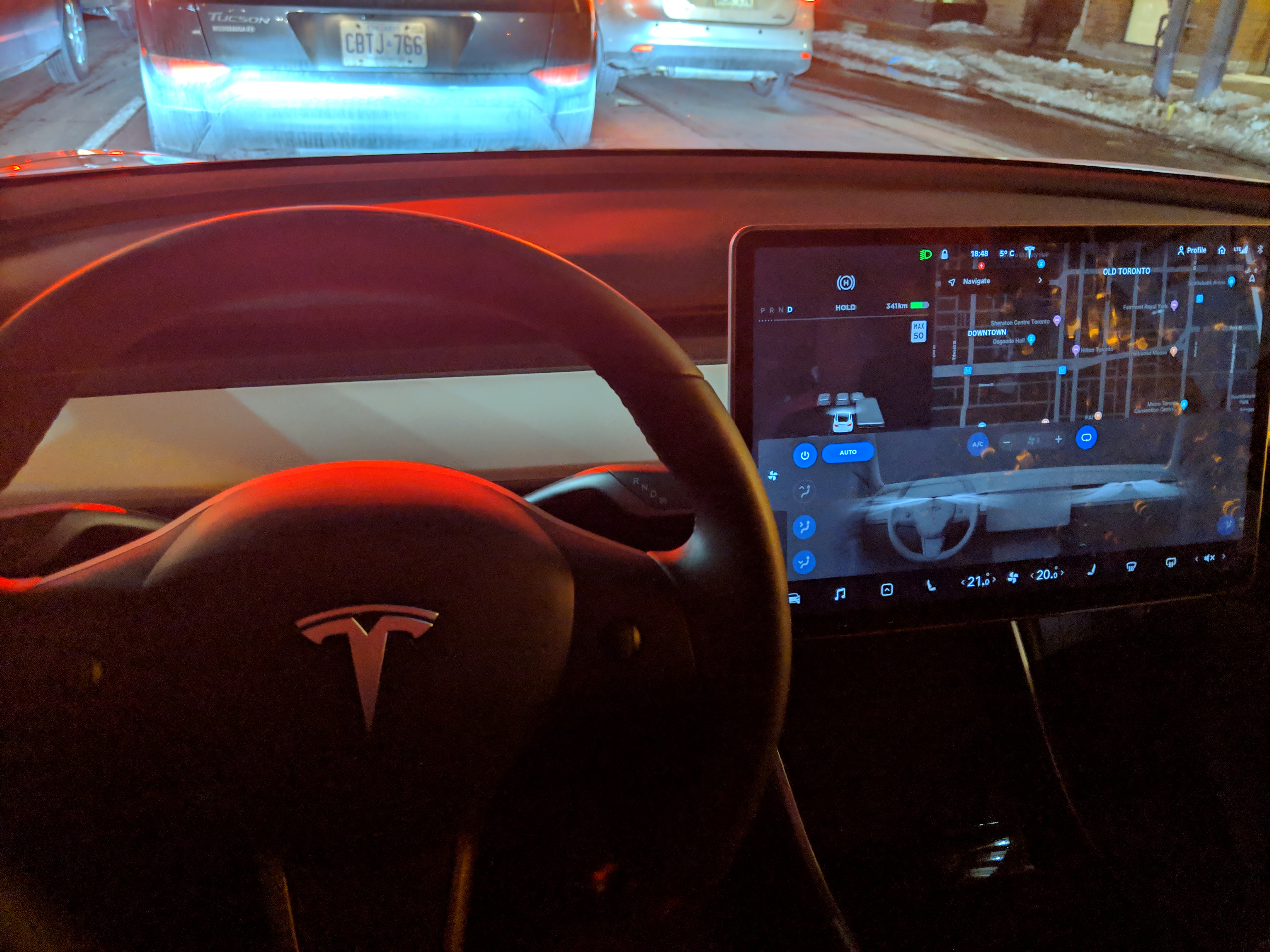
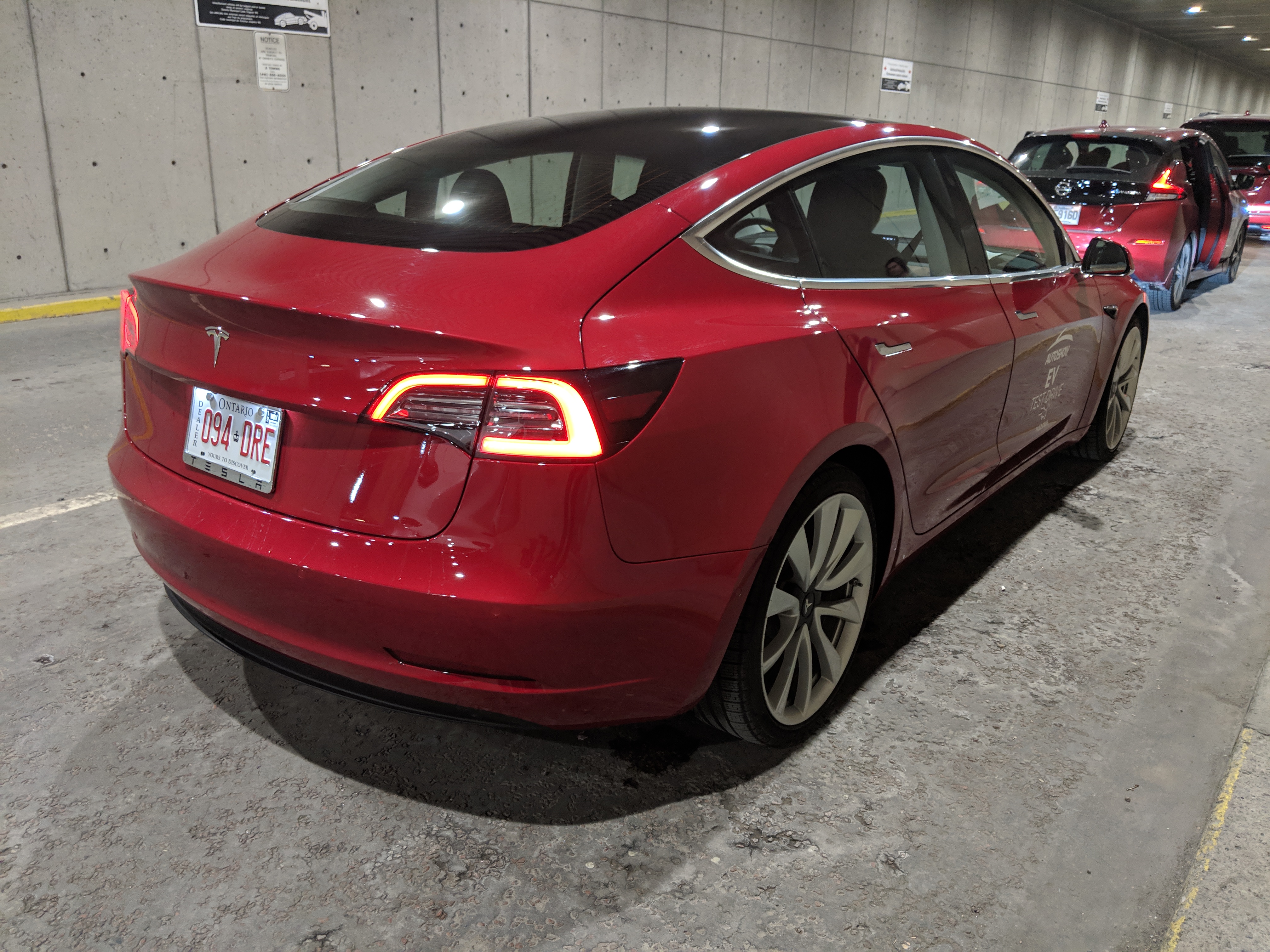
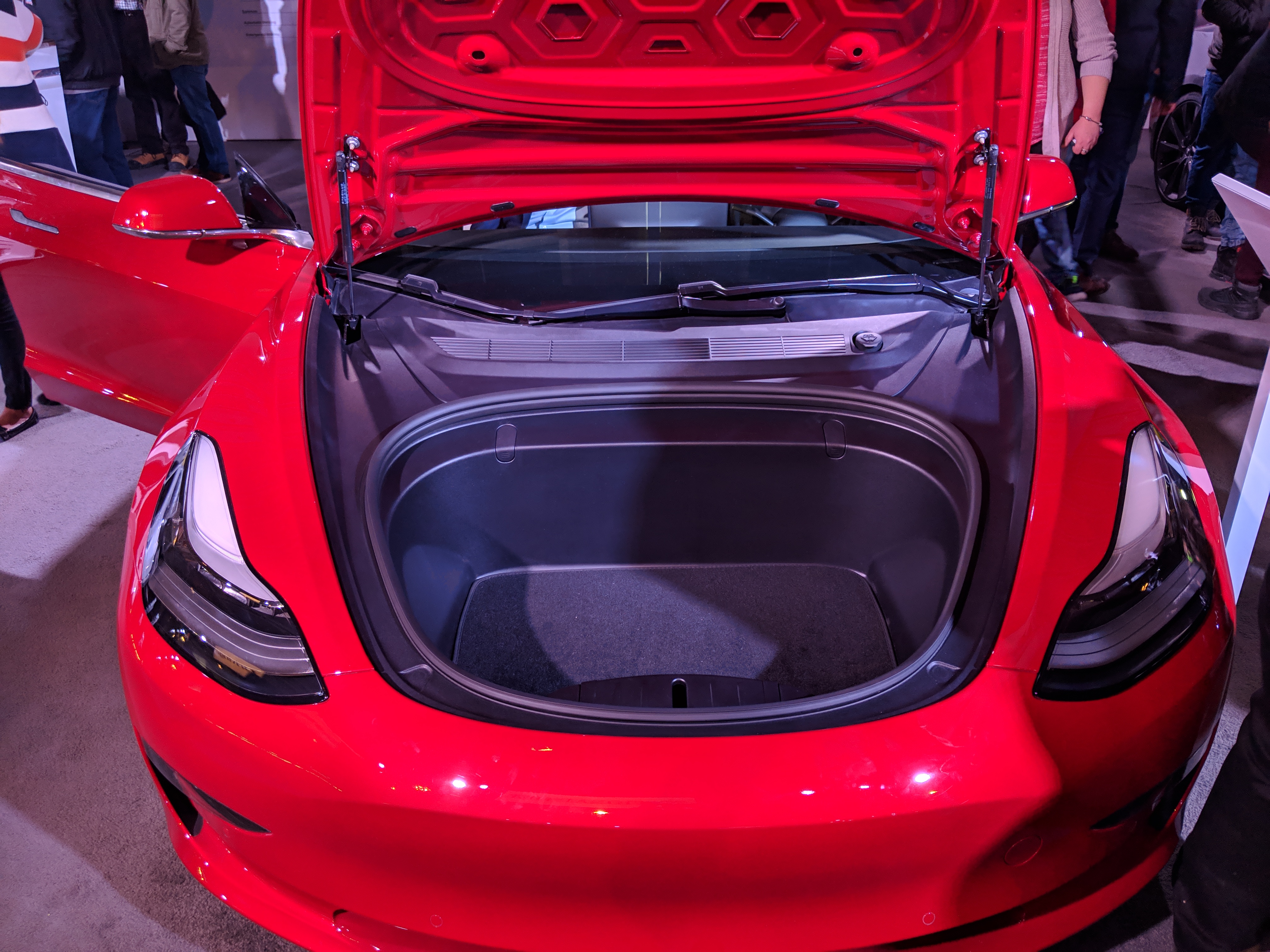
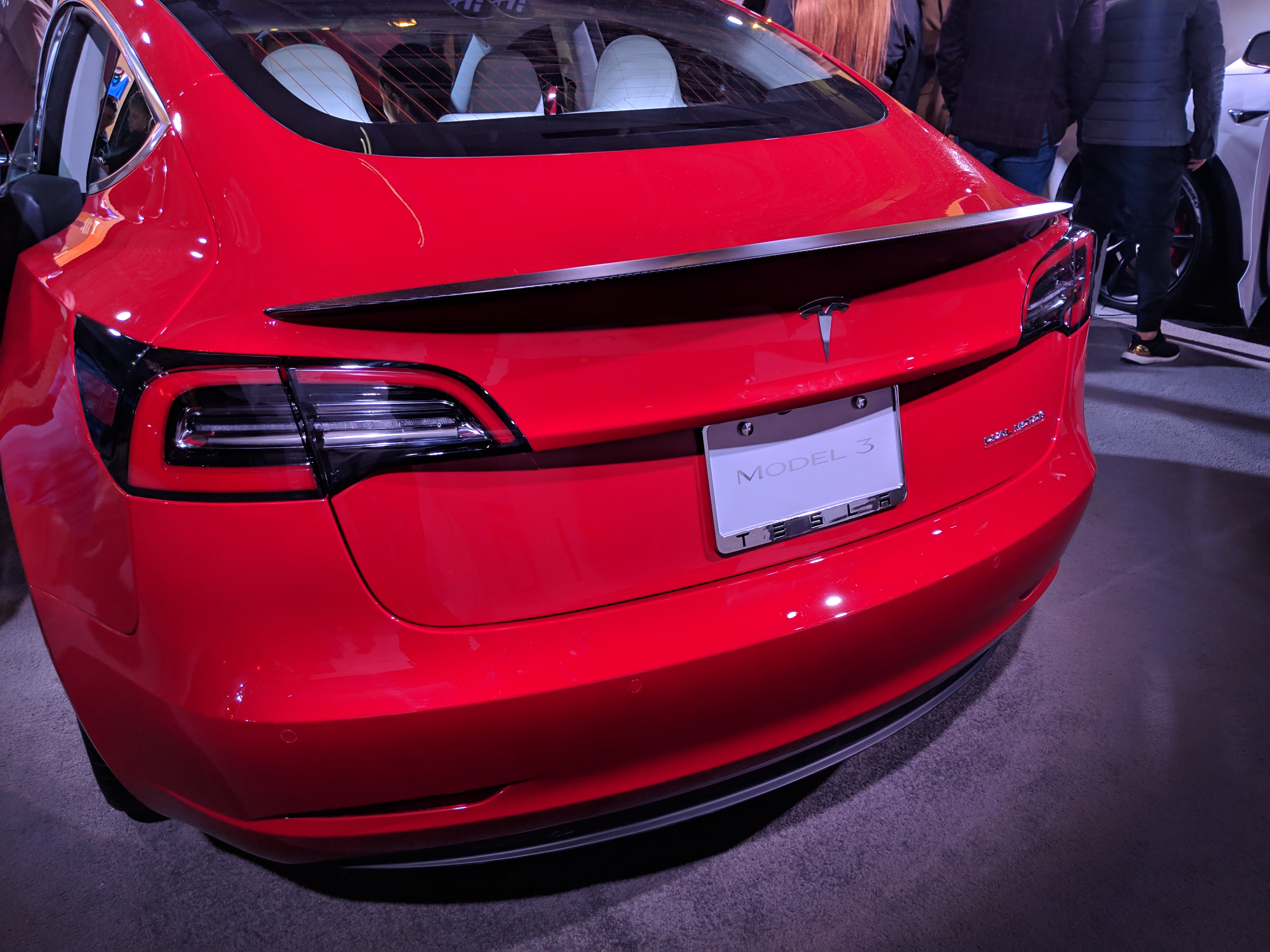

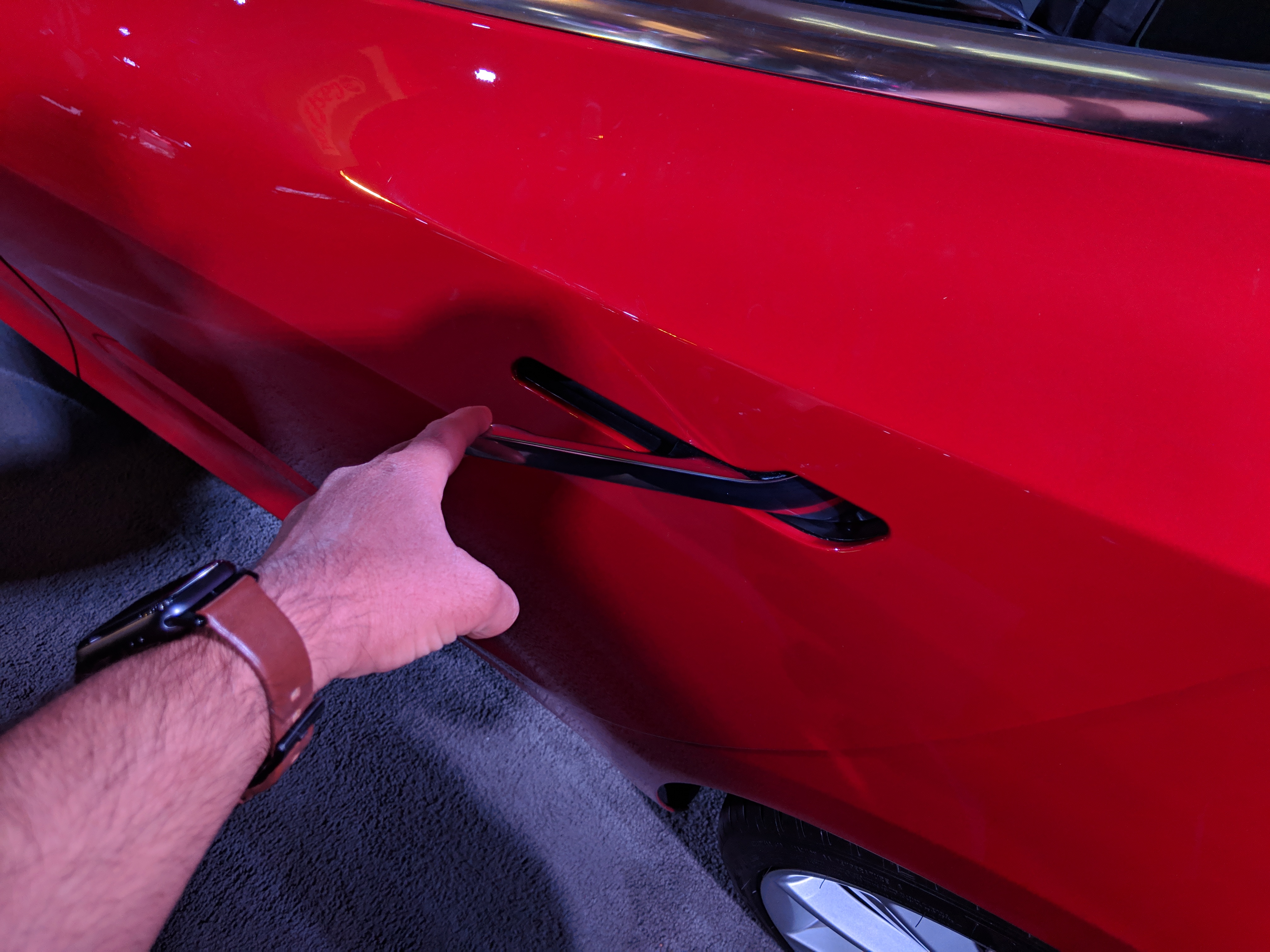
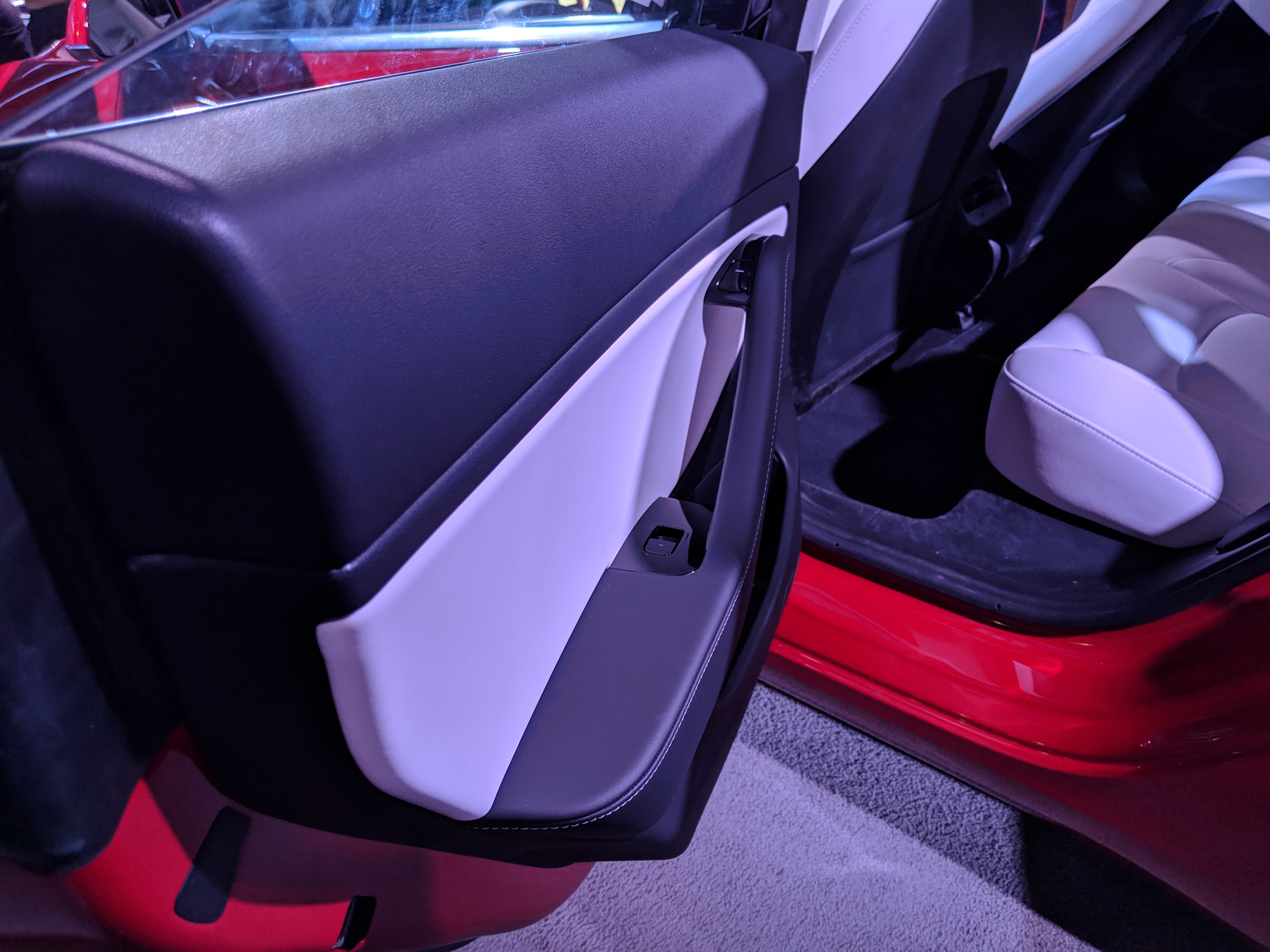
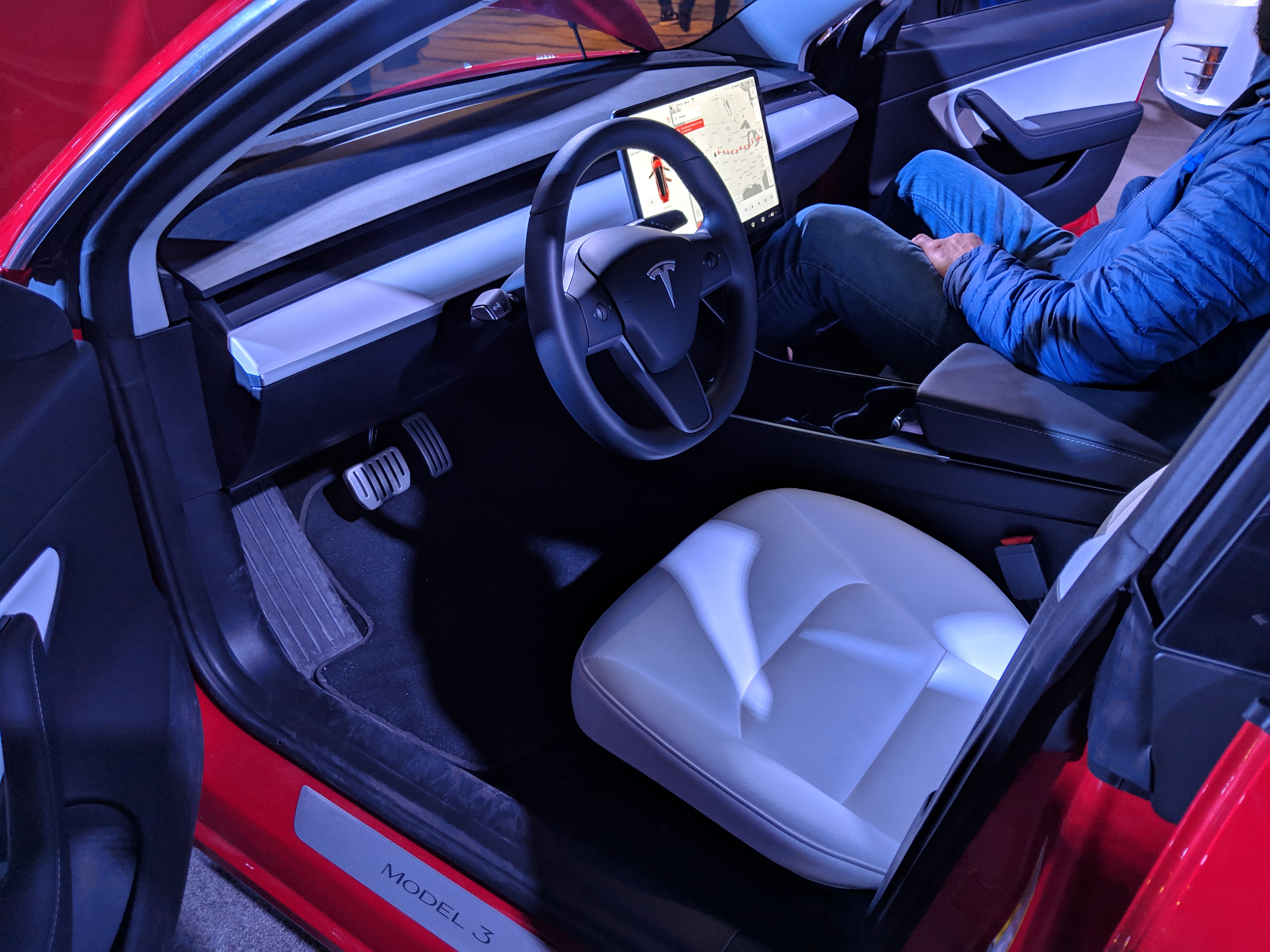
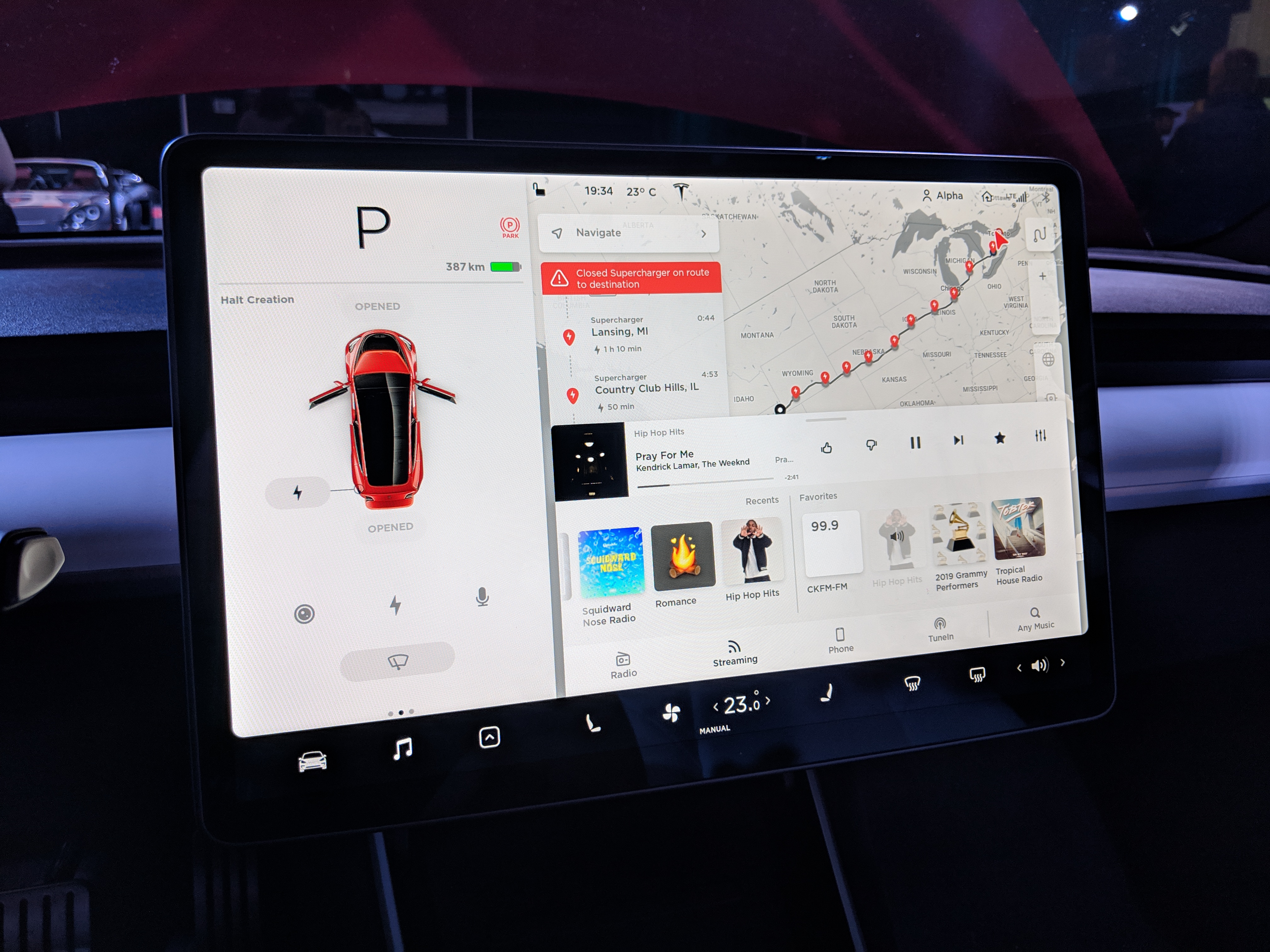
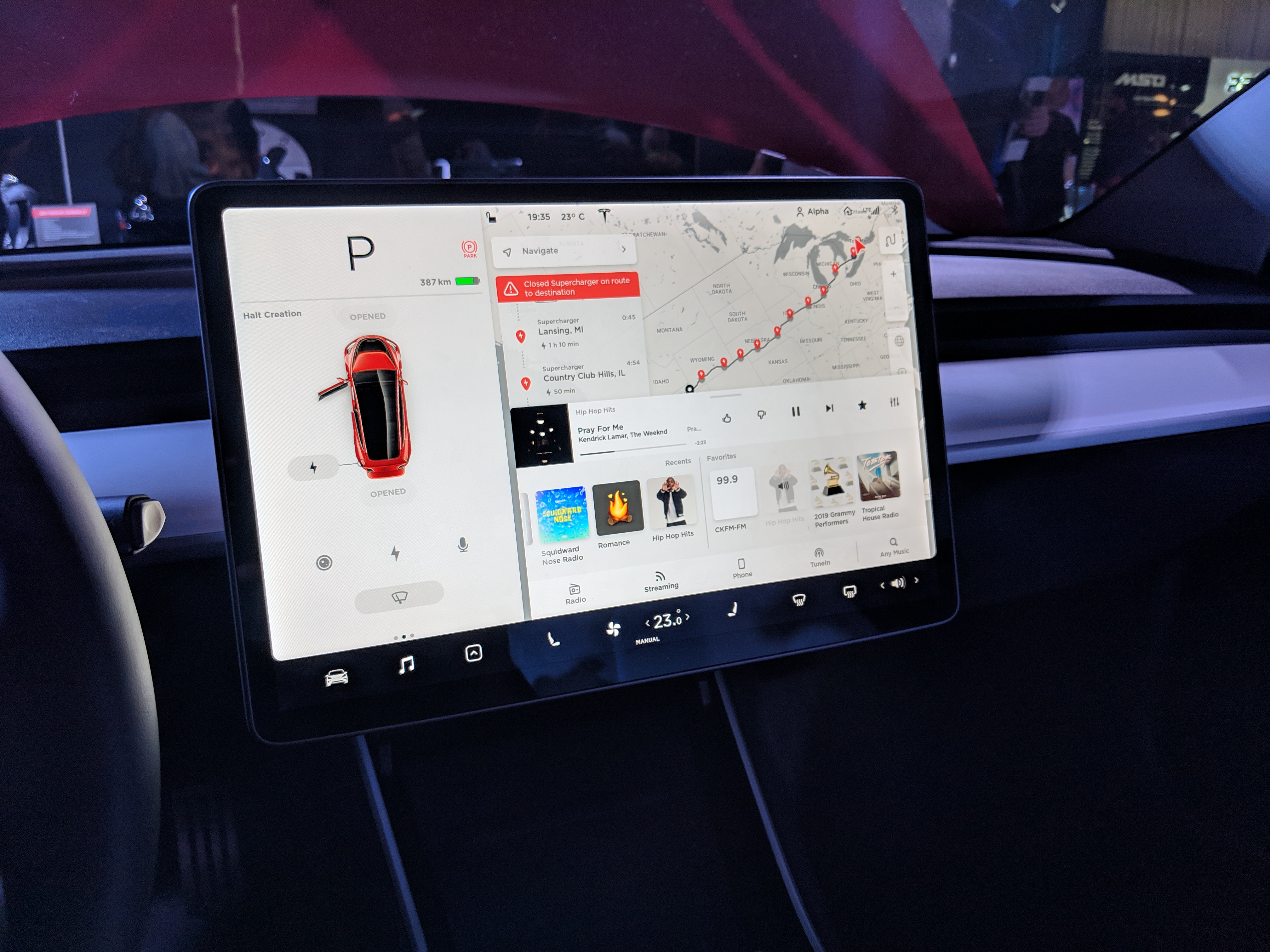

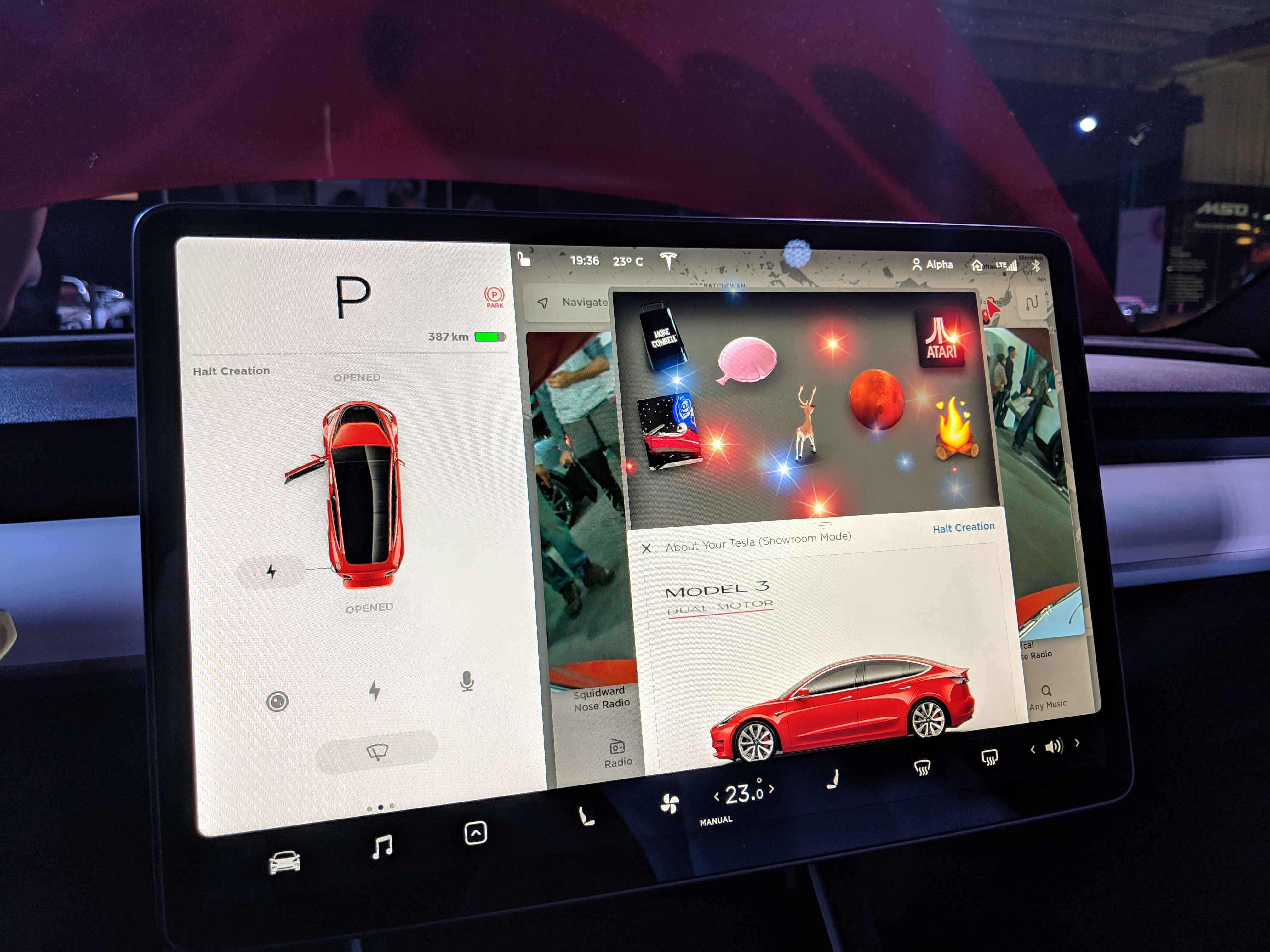
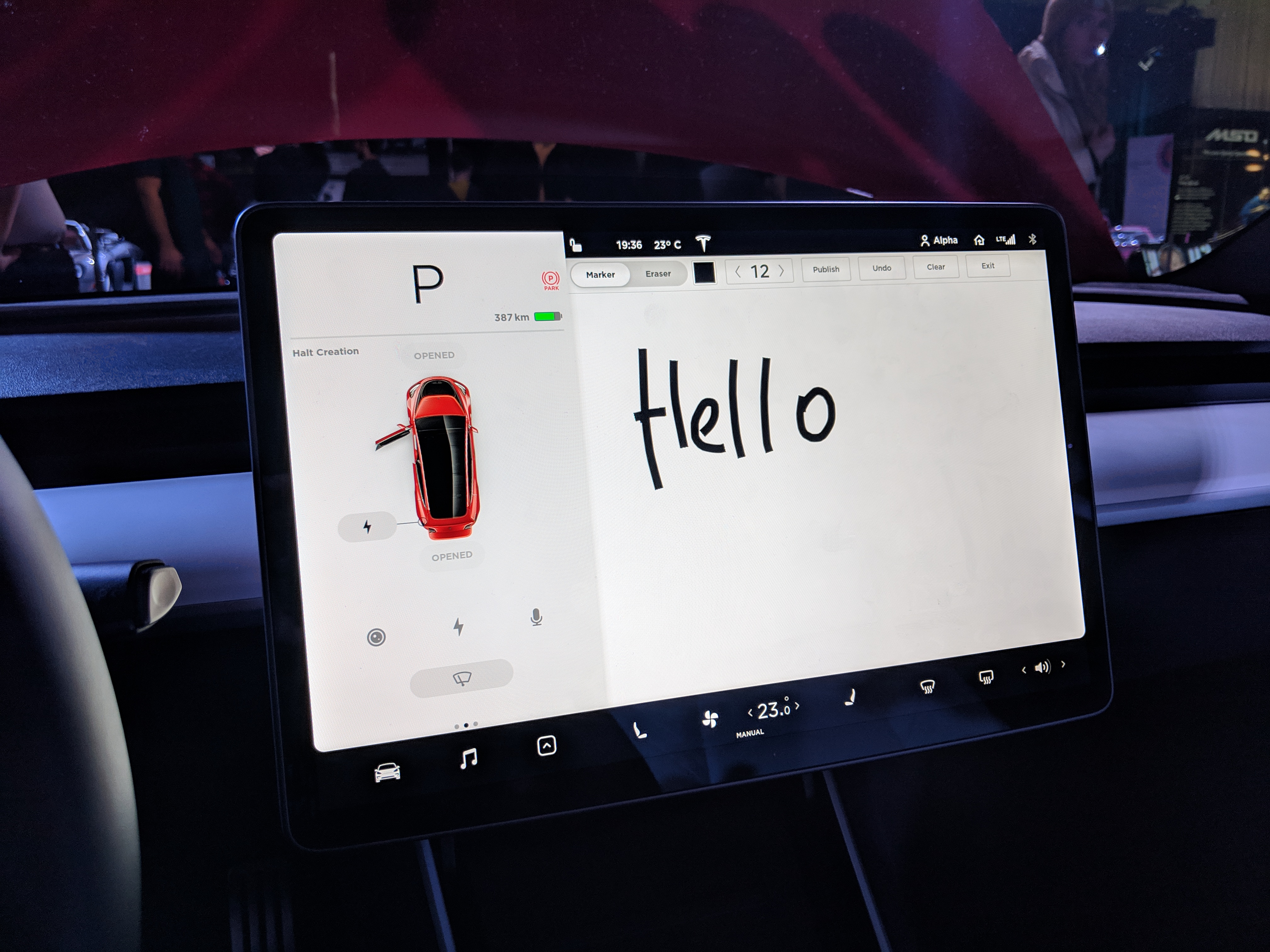

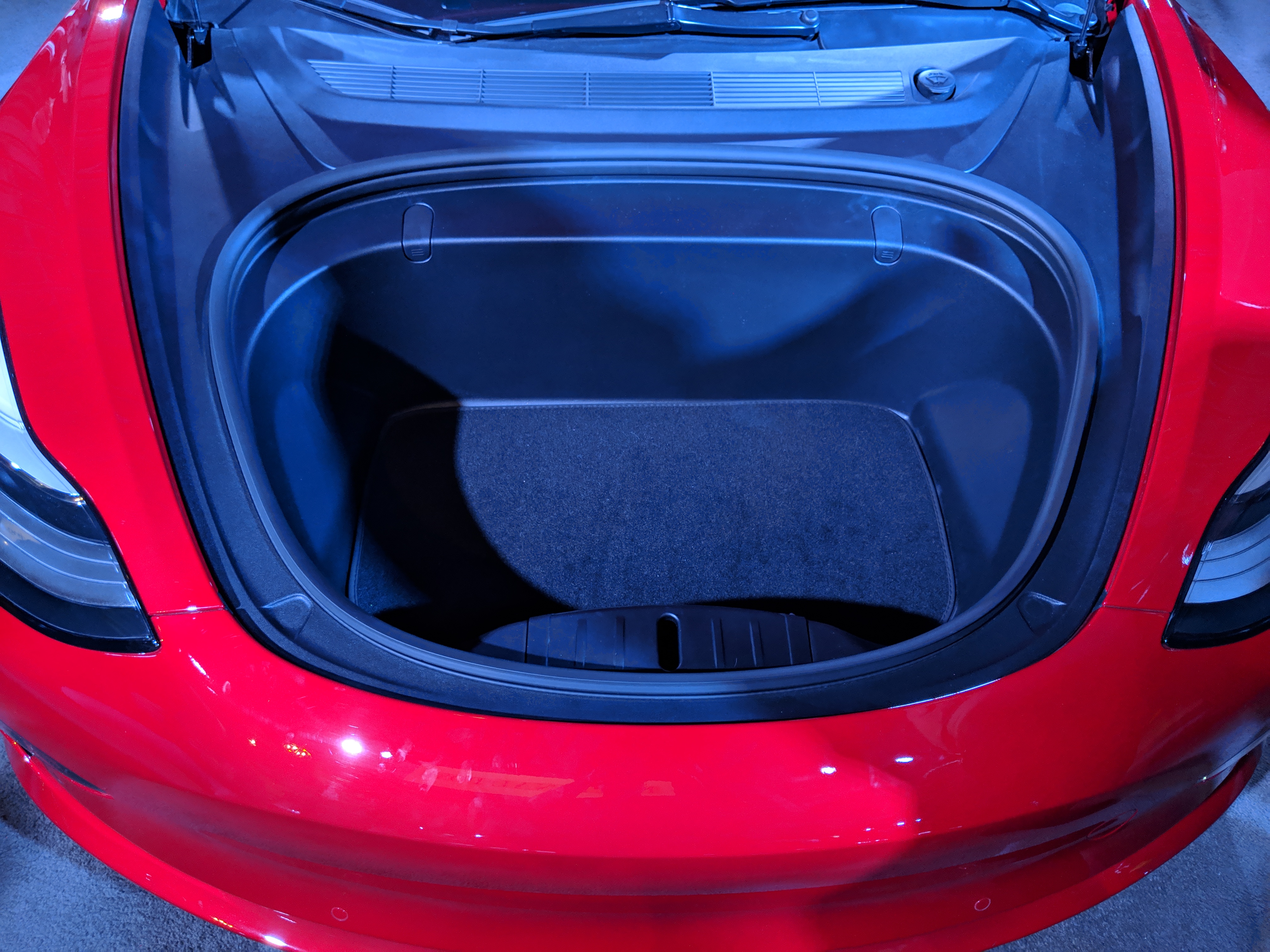

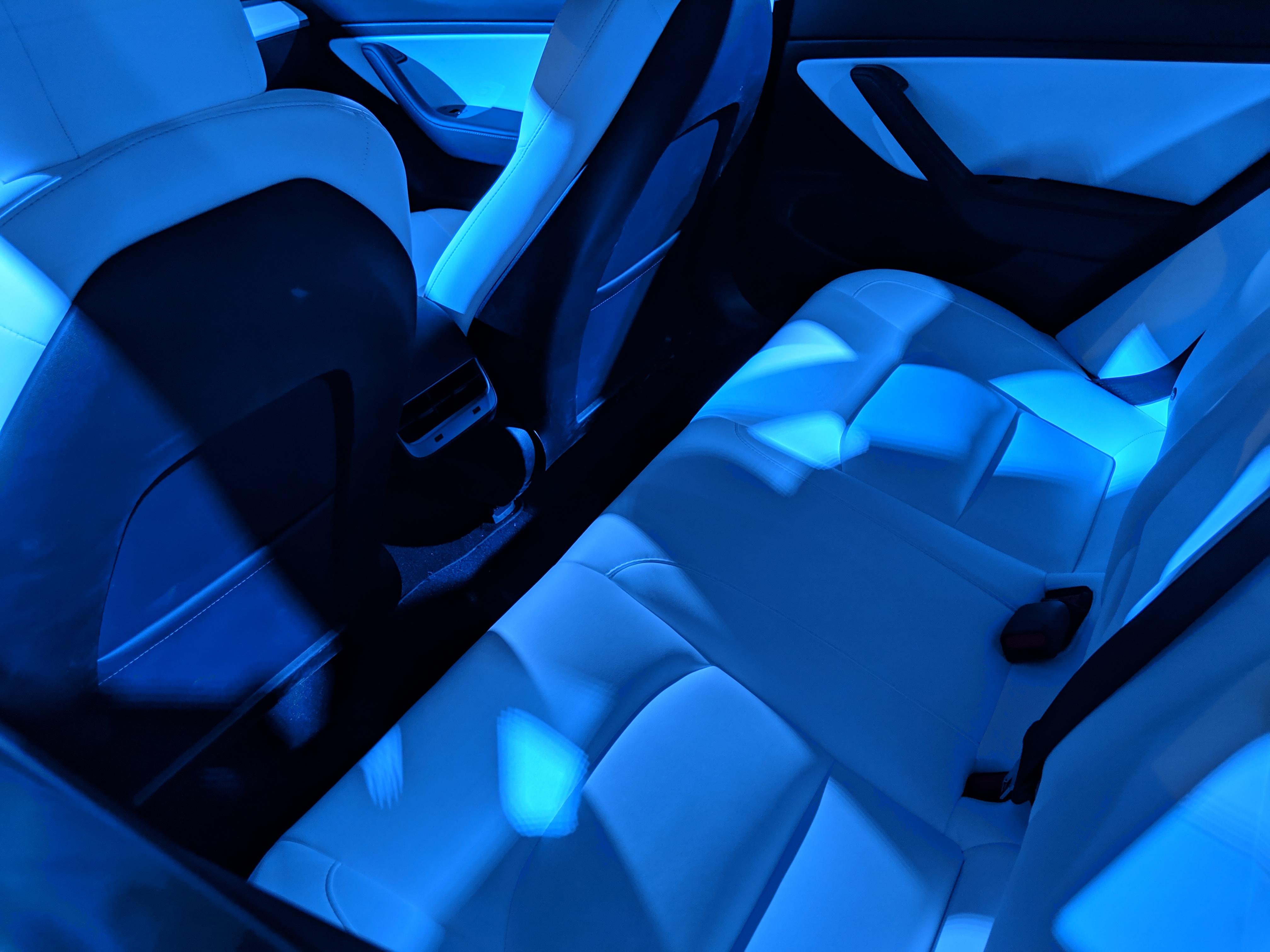
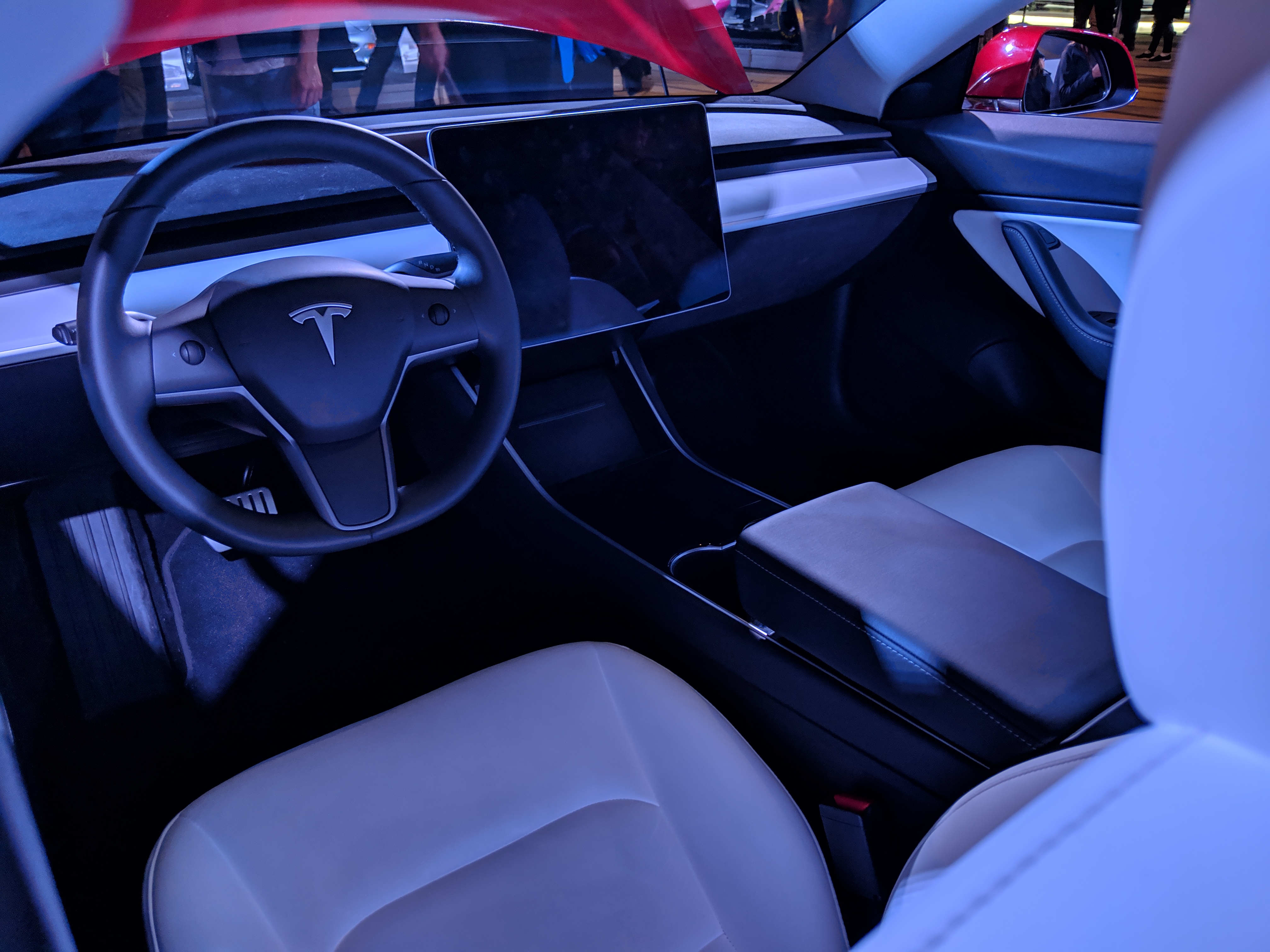

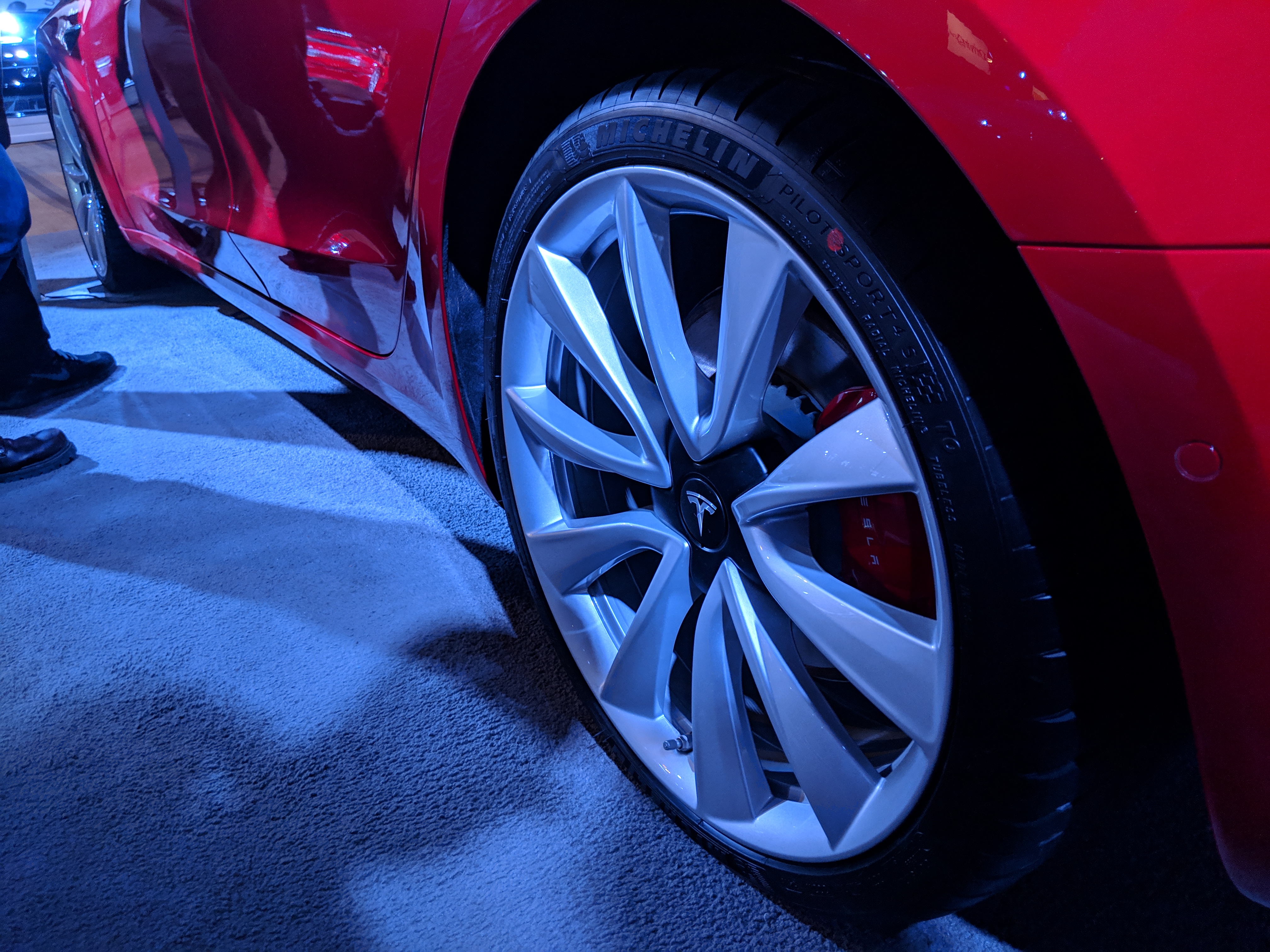

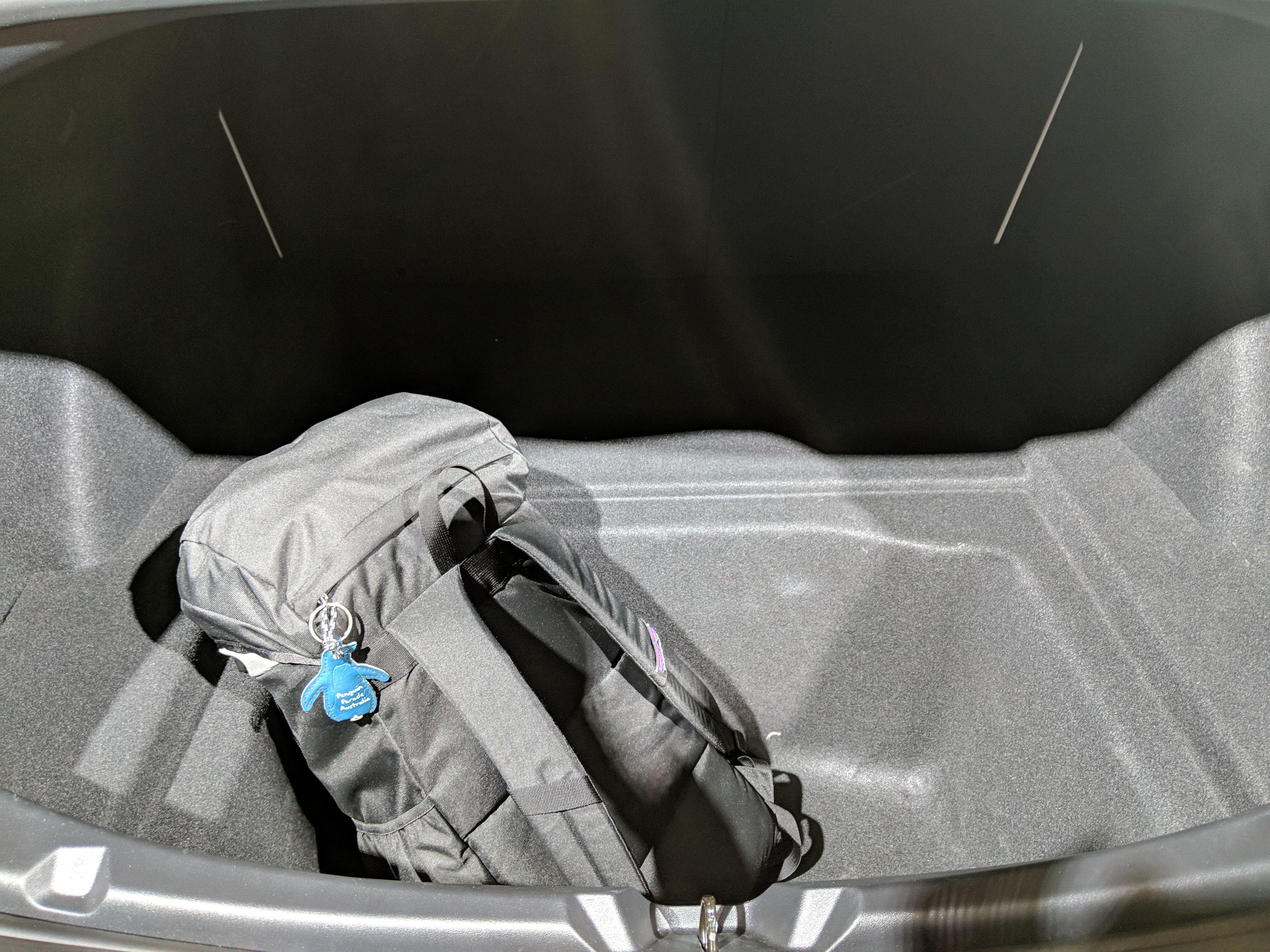
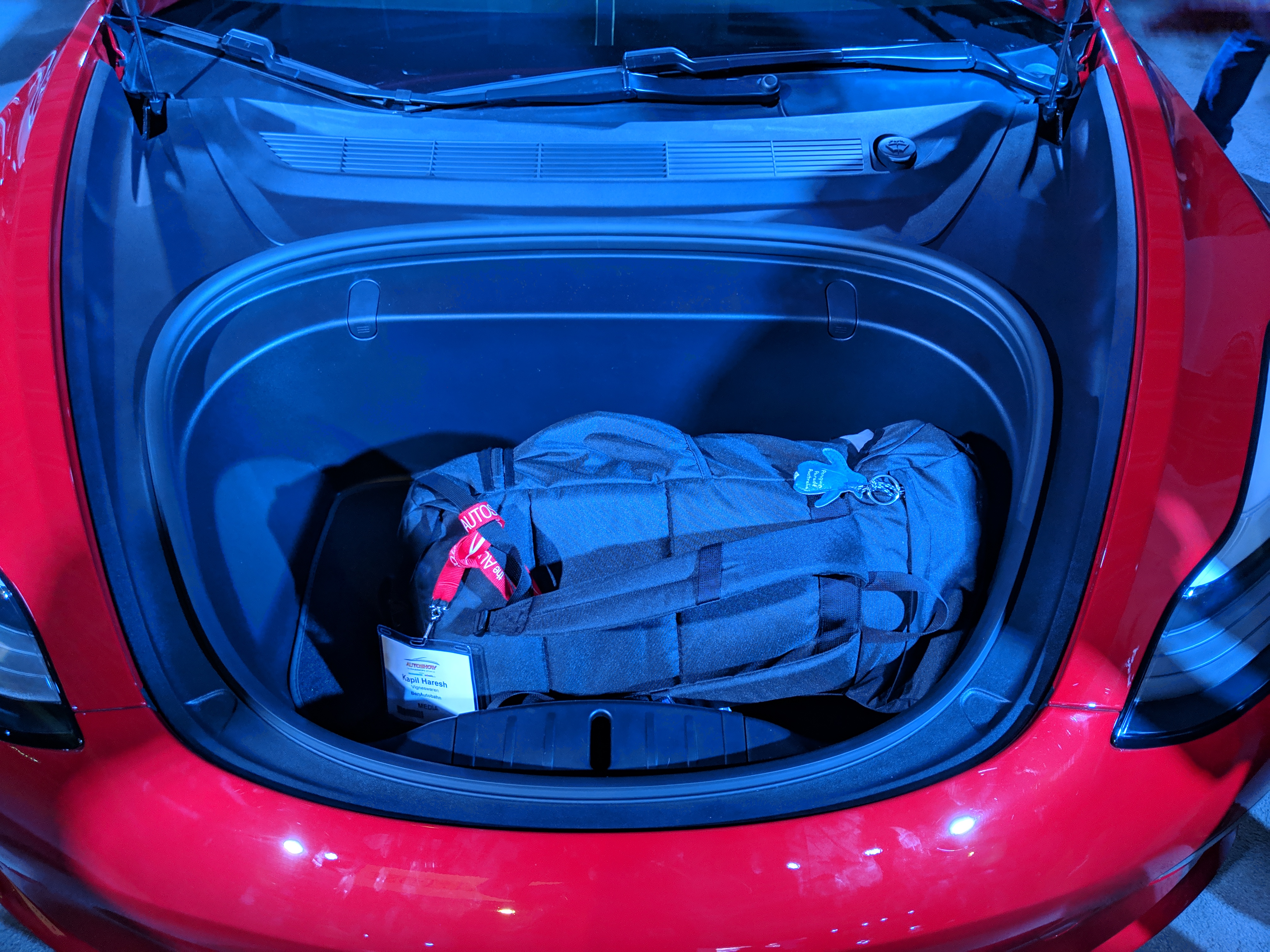
Article was written in 2019.
Words & Photos: Kapil Haresh



